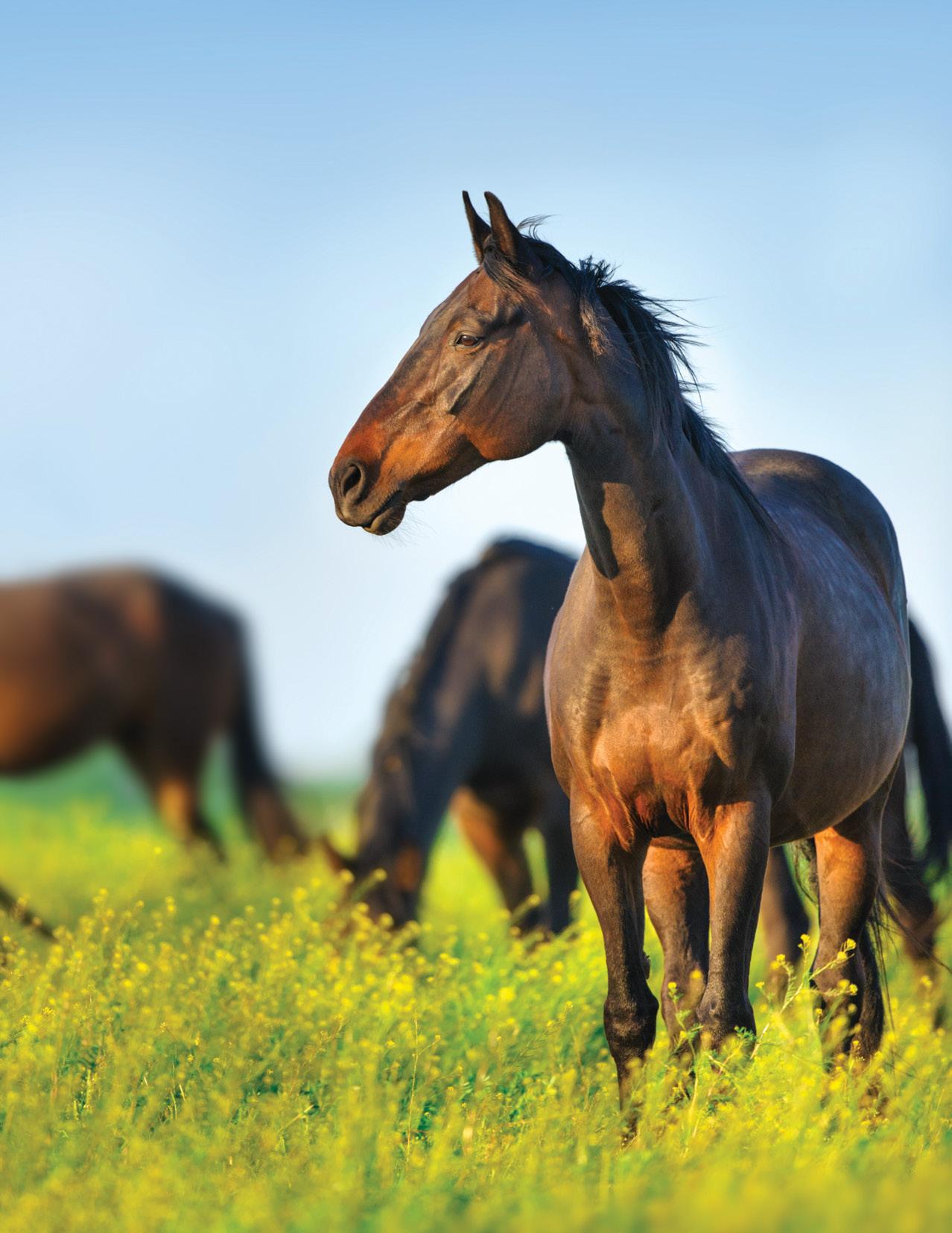
FALL 2023 · VOLUME 72 · NUMBER 3
USDA Announces Plans to Strengthen Approval of AnimalRaising Claims on Meat Labels
When the Biden administration issued an executive order on promoting competition in the American economy in July 2021, AWI responded by urging the US Department of Agriculture to address deceptive label claims as part of its effort to facilitate fairness in the marketplace. For the past decade, we have pressured the department to improve its process for approving animal-raising claims—releasing reports in 2014, 2016, 2019, and 2023 critical of the USDA’s approval of meat labels. In total, these reports covered our review of approximately 200 USDA-approved claims found on meat products. In March of this year, four US senators, led by Richard Blumenthal (D-CT), sent a letter
Animal Welfare Institute
DIRECTORS/OFFICERS
Jill Carey
Caroline A. Griffin, Esq., Vice Chair
Mary Lee Jensvold, PhD, Secretary
Alan E. Kessock, CPA, Treasurer
Cathy Liss, Chair
Chris Miller, DVM
William S. Stokes, DVM
SCIENTIFIC COMMITTEE
Juan Carlos Cardenas, DVM
Cristina Eisenberg, PhD
Roger Fouts, PhD
David Fraser, PhD
Rich Reading, PhD
Viktor Reinhardt, DVM, PhD
Robert Schmidt, PhD
STAFF AND CONSULTANTS
Alexandra Alberg
Senior Graphic Designer
Nancy Blaney Director, Government Affairs
Claire Coughlin Coordinator, Safe Havens for Pets
Adrienne Craig, Esq. Policy Associate and Staff Attorney, Farmed Animal Program
Kate Dylewsky
Assistant Director, Government Affairs
Maisy Englund, PhD Scientist, Animal Cognition, Animals in Laboratories Program
Sue Fisher
Senior Policy Advisor, Marine Life and Terrestrial Wildlife Programs
Marjorie Fishman
Public Relations Manager
Ericca Gandolfo Policy Advisor, Government Affairs
Allie Granger Senior Policy Associate, Farmed Animal Program
Joanna Grossman, PhD
Director, Equine Program and Senior Policy Advisor, Farmed Animal Program
Johanna Hamburger, Esq.
Director and Senior Attorney, Terrestrial Wildlife Program
Georgia Hancock, Esq.
Director and Senior Attorney, Marine Life Program
James Jacobs Office Manager
to the USDA urging it to address misleading meat labels and citing our most recent report.
On June 14, following receipt of the Senate letter—and after multiple meetings with AWI and other stakeholders—the USDA announced that it will soon take steps to improve its label approval program to avoid misleading consumers. Specifically, it plans to issue revised industry guidelines that will encourage companies to (1) strengthen the documentation they submit to the department to substantiate animal-raising claims and (2) use third-party certification to verify those claims. The USDA signaled that it may also conduct rulemaking related to this action, which would codify the change in regulation.
We have long urged the USDA to require—not merely encourage—producers to obtain third-party certification to verify holistic assertions related to animal welfare (e.g., “humane”) and environmental stewardship (e.g., “sustainable” or “regenerative”). Allowing producers to make animal welfare claims without adhering to higher standards harms animals, higher-welfare farmers, and consumers who expect these claims to indicate better treatment of animals. Please voice your support for improving the label approval process by contacting the USDA through our online Action Center: awionline.org/labelclaimaction
Robin Jacobsohn, Esq.
General Counsel and Chief Legal Officer
Dena Jones Director, Farmed Animal Program
Eric Kleiman Researcher
Joanna Makowska, PhD Director and Senior Scientist, Applied Animal Behavior, Animals in Laboratories Program
Paul Marchione
Chief Operations Officer
Wendy McNally Donor Relations Manager
Kim Meneo
Digital Engagement Manager
Susan Millward
Executive Director and Chief Executive Officer
Kate O’Connell Senior Policy Consultant, Marine Life Program
Lauren Ponder Accounting Manager
Mary Lou Randour, PhD
Senior Policy Advisor, Animals and Family Violence Program
Gwendy Reyes-Illg, DVM Scientist, Veterinary Medicine Consultant, Farmed Animal Program
Naomi A. Rose, PhD
Senior Scientist, Marine Mammal Biology, Marine Life Program
D.J. Schubert
Senior Scientist, Wildlife Biology, Marine Life and Terrestrial Wildlife Programs
Zack Strong
Senior Policy Advisor and Senior Attorney, Farmed Animal Program
Regina Terlau-Benford Coordinator, Humane Education Program
Dave Tilford
Senior Writer/Editor
For subscription inquiries or other information, contact:
Animal Welfare Institute 900 Pennsylvania Avenue, SE Washington, DC 20003 (202) 337-2332
awi@awionline.org awionline.org
ISSN 1071-1384 (print)
ISSN 1930-5109 (online)
Tax ID# 13-5655952
CFC# 10474
SPOTLIGHT
ABOUT THE COVER

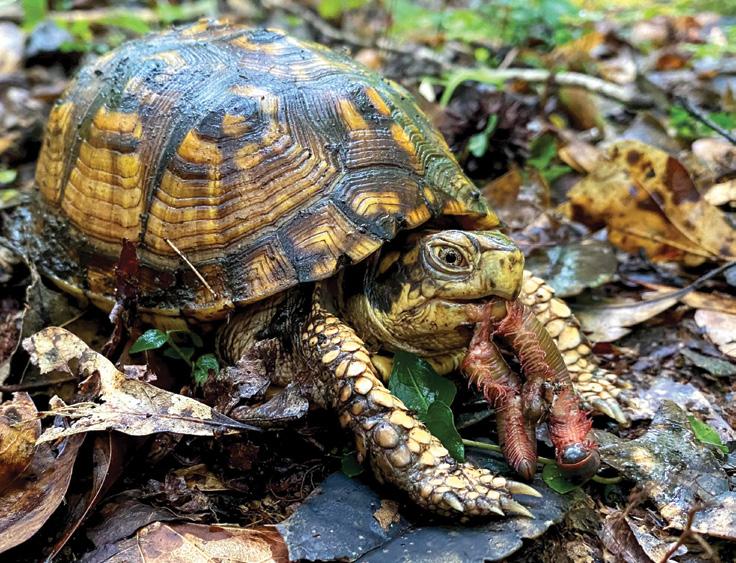
Horses have a special place in American culture—from majestic wild mustangs to companion horses who are part of the family. Horses are also featured in our sporting life: Racehorses fly around tracks, ponies pivot deftly around polo fields, graceful show horses strut around arenas. Too often, however, these equine athletes are treated not as partners in competition but means to an end. Particularly in thoroughbred racing and walking horse competitions, abusive practices have been allowed to flourish, resulting in horse injuries and deaths. AWI is working to strengthen oversight and stamp out abuse. See page 24 for more. Photograph by kwadrat70/Adobe Stock.
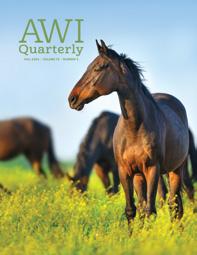
22 ANIMALS IN LABORATORIES 10 In Lucrative Primate Trade, Enforcing the Law Makes Industry Cry Foul 12 Two Funding Opportunities for Animals in Labs 12 3D Printing for Conservation COMPANION ANIMALS 24 New Regs to Rein In Racehorse Abuse; USDA Proposes Potential HPA Upgrade FARMED ANIMALS 2 USDA Announces Plans to Strengthen Approval of Animal-Raising Claims on Meat Labels 4 Victory! High Court Leaves California’s Prop 12 Standing 4 USDA Greenlights Cell-Cultivated Chicken 5 Food Label Guide Updated with New Farmed Animal Welfare Labels 6 AWI Petitions for Bird Flu Response Plans that Shun Horrific Mass-Killing Method HUMANE EDUCATION 23 Avian Advocates Occupy Top Perches in Voice for Animals Contest MARINE LIFE 13 Advancing the Argument Against Marine Mammal Captivity 13 Advocating End to Cetacean Captivity in Europe 13 Gray Whales in Steep Decline 14 AWI’s Kate O’Connell: Passion and Persistence in Defense of Ocean Life 18 Using DNA in Footprints to Track Polar Bear Populations 28 Troubled Whale Hearing Study Amplifies Alarm over Ocean Noise Impacts IN REMEMBRANCE 16 A Life Among Whales: Roger Payne’s Legacy in Patagonia, Argentina TERRESTRIAL WILDLIFE 19 CITES Animals Committee Resumes In-Person Meetings 20 New York to Outlaw Wildlife Killing Contests 20 Combatting Wildlife Trafficking in Africa 21 AWI Sues BLM over Wild Horse Management 21 Biodiversity Declines Worse than Previously Thought 22 Evaluating the Suitability of Confiscated and Rehabilitated Eastern Box Turtles for Release back into the Wild GOVERNMENT AFFAIRS 8 Improving Animal Welfare Act Enforcement 8 Helping Homeless People and Pets 8 Pork Industry Pals Try to Torpedo Prop 12 8 Saner Solutions to Wildlife Management 9 Protecting Horses from Slaughter and Unsafe Transport 9 Legislators Float Wrong Moves on Right Whales REVIEWS 26 Flight Paths 27 Many Things Under a Rock 27 Around the Ocean in 80 Fish & Other Sea Life
QUARTERLY
AWI
FALL 2023
EASTERN BOX TURTLE, RYAN RIMPLE
@AWIonline facebook.com/animalwelfareinstitute @AWIonline
VICTORY! HIGH COURT LEAVES CALIFORNIA’S PROP 12 STANDING
In 2018, Proposition 12 passed in California with 63 percent of the vote. It mandated minimum floor space for egg-laying hens, calves raised for veal, and breeding sows and their piglets in California and prohibited the sale of eggs, veal, and whole pork meat (uncooked cuts of pork) from animals housed in below-minimum spaces, regardless of location. With little instate pork production, Californians rely on producers outside of the state to produce compliant products.
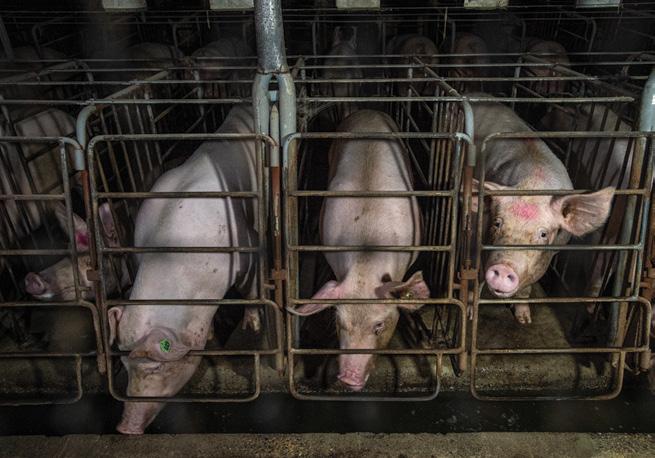
In October 2022, the National Pork Producers Council (NPPC) challenged the law before the US Supreme Court, arguing that the law violated the “dormant Commerce Clause”—a doctrine the courts have inferred from the Constitution’s Commerce Clause that prohibits states discriminating against or placing an undue burden on interstate commerce (for instance, by enacting protectionist laws aimed at giving in-state producers an advantage over out-of-state producers of consumer goods). The NPPC argued that California was dictating production
practices outside of its borders and impermissibly burdening commerce among states.
In May 2023, all nine justices rejected the NPPC’s assertion that the sales ban is unconstitutional merely because it has indirect effects on out-of-state producers. In the controlling opinion, five justices concluded that Prop 12 did not unconstitutionally discriminate against out-of-state producers, because the restriction applied equally to all sources of pork, regardless of its state of origin.
Prior to the Supreme Court ruling, the California Department of Food and Agriculture (CDFA) finalized Prop 12 regulations that require producers to prove compliance with an annual on-site inspection by an accredited certifying agent. Distributors of covered products are required to register with the CDFA and provide a certificate of compliance for their supplying producers. However, the CDFA was enjoined from enforcing the regulations applicable to whole pork meat until the court finalized its decision. Now, distributors and producers of pork are allowed to “self-certify” until January 1, 2024, when the requirements of Prop 12 go into full effect.
CULTIVATED CHICKEN
In June, two companies—Upside Foods and Good Meat—were issued groundbreaking grants of inspection by the US Department of Agriculture that cleared the way for “cell-cultivated” (a.k.a. lab-grown) chicken to be produced and sold in the United States for the first time, bringing slaughterfree meat one step closer to grocery store shelves.
Receiving a grant of inspection was the second of two major regulatory hurdles the companies had to clear in order to bring these products to consumers. The first required obtaining the stamp of approval from the Food and Drug Administration after a rigorous review process that demonstrated the products are safe for human consumption.
Unlike plant-based meat alternatives that mimic the flavor of meat, cellcultured meat is identical to animal flesh down to the cellular level and therefore identical in taste and texture. It is produced by harvesting cells from animal tissue, which are then fed nutrients within a steel-tank bioreactor, causing them to grow and multiply into the final product.
For now, Upside Foods and Good Meat are partnering with restaurants in San Francisco and Washington, DC, respectively, to put cell-cultivated meat on the menu. Eventually, they hope to scale up and offer their wares in grocery stores.
farmed
animals
FARMED ANIMALS
WE ANIMALS MEDIA
4 AWI QUARTERLY FALL 2023
The US Supreme Court shot down the pork industry’s effort to overturn California’s Prop 12, which prohibits certain forms of extreme confinement in California and the sale of products from any facility using such cruel methods.
Food Label Guide Updated with New Farmed Animal Welfare Labels
More and more consumers are seeking to avoid products from “factory farms”—where animals are kept in abysmal conditions. Such consumers often look for animalraising claims on packaging labels that purport to indicate higher-welfare conditions. Unfortunately, there is precious little oversight and standardization of label claims such as “free range” and “humanely raised,” and well-meaning consumers can easily be deceived by industrial producers using such terms as a hollow marketing ploy.
AWI first published A Consumer’s Guide to Food Labels and Animal Welfare more than a decade ago. Each year, new labels are added as producers respond to growing consumer interest in higher-welfare, sustainable food. The 2023 update to the guide includes new animal welfare and environmental stewardship label claims now appearing on meat, poultry, and egg products.
Regeneratively Raised
As corporate agribusiness has taken control over a significant portion of organic agriculture, animal welfare and environmental advocates have embraced a more sustainable system, known as regenerative farming. Regenerative farming nurtures and restores soil health and protects water resources and biodiversity. In addition, regenerative animal welfare standards typically exceed not only those of conventional agriculture but also the welfare standards applied to much of organic agriculture. While “regenerative” claims are starting to show up on a variety of food products, the US Department of Agriculture has not established a definition for “regenerative,” “sustainable,” or similar claims,
nor does it have a set of independent standards for certifying products with these claims. The USDA merely verifies that the producer has met its own standards based on its own definition of the term. Because these claims may be used in a meaningless or misleading manner, AWI recommends regenerative claims that are certified by an independent third party, such as Regenerative Organic Certified.
Slow Growth
Claims related to animal growth rates are now appearing on packages of poultry—chicken meat, in particular. Research has demonstrated the animal welfare benefits of using breeds that grow at a slower rate than conventional poultry breeds. According to the USDA, producers using claims such as “slow growth” or “heirloom” must provide documentation concerning the specific breed and its “grow out” time from birth to slaughter in comparison to conventional breeds. However, AWI is concerned that the USDA may not possess the scientific resources needed to assess use of the growth speed claims and supports using maximum daily weight gain instead of age at slaughter to determine eligibility. AWI endorses the claim when it is verified by a third-party certification program that is rated as a “best choice” or “next best choice” in our guide.
Even as AWI helps consumers develop a deeper understanding of the terms and certifications found on food labels, we are calling on the USDA to crack down on deceptive animal-raising claims. (See page 2.) So long as deceptive and unverified claims are allowed, however, A Consumer’s Guide to Food Labels and Animal Welfare can help consumers discern which claims to trust and which to question.

FARMED ANIMALS
5 AWI QUARTERLY FALL 2023
ANTONIVANO
AWI Petitions for Bird Flu Response Plans that Shun Horrific Mass-Killing Method
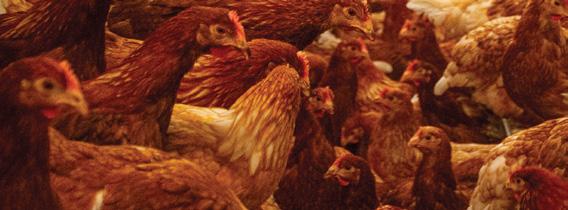
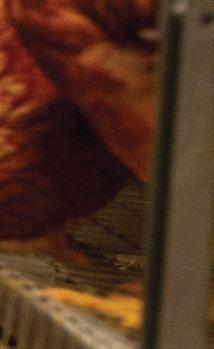
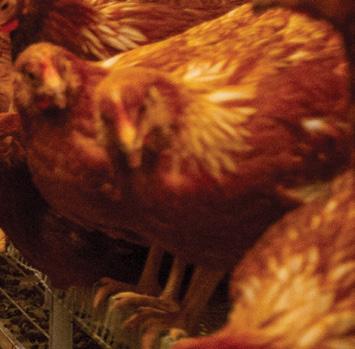
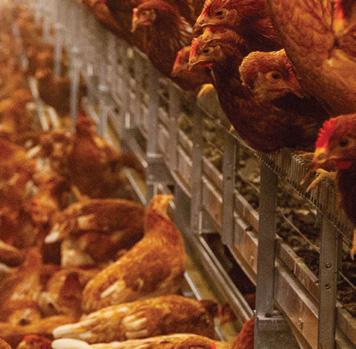
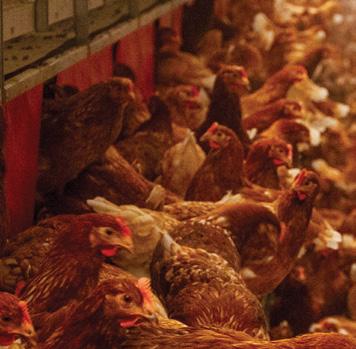
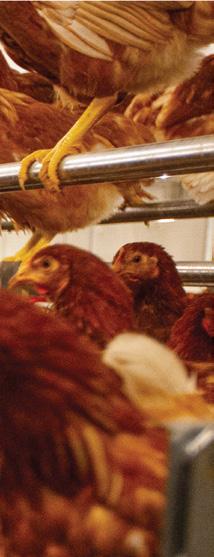
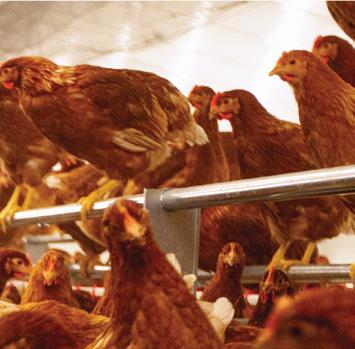
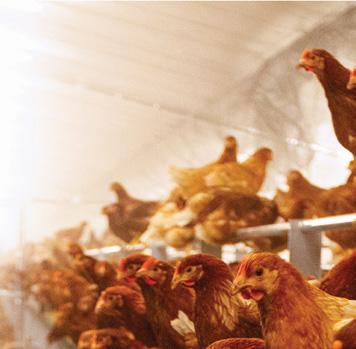
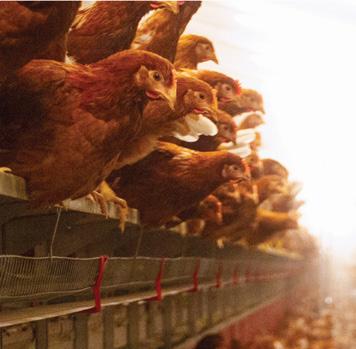
Since early 2022, countries around the world have felt the impacts of a highly pathogenic avian influenza (HPAI) outbreak that has threatened wild bird populations and decimated domestic poultry flocks on an unprecedented scale. In the United States, HPAI has been confirmed in over 300 commercial and 500 backyard flocks across 47 states. This has led to the “depopulation” (mass killing) of nearly 59 million birds, the majority of whom have been egg-laying hens.
Pursuant to the Animal Health Protection Act (AHPA), animal disease response in the United States is overseen by the US Department of Agriculture’s Animal and Plant Health Inspection Service (APHIS), in coordination with state
and tribal animal health officials. In the event of an HPAI outbreak, the USDA’s primary control and eradication strategy to combat disease spread is “stamping out,” which refers to the mass depopulation of clinically infected and “in-contact susceptible” birds. In practice, this means that if one infection is confirmed in a flock, every single bird at that location will be killed—even if that means killing millions of potentially uninfected birds.
In addition to overseeing disease response, the USDA provides indemnity payments and compensation to producers for the loss of birds and eggs and for certain costs associated with depopulation, disposal, and other
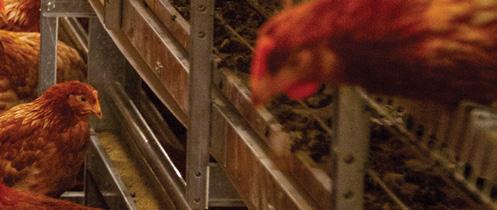
PAU 6 AWI QUARTERLY FALL 2023
virus elimination activities. By June 2023, the federal government had spent an estimated $793 million on HPAI response activities for the current outbreak and had allocated an additional $502 million on preparation for potential infections in the future. These estimates bring the total cost of the current outbreak to well over $1.2 billion, exceeding the estimated $950 million spent on response and preparedness activities and indemnity payments resulting from the 2014–2015 HPAI outbreak—previously the worst animal health disease incident in US history.
Under federal avian influenza compensation regulations finalized in 2018, producers are eligible for HPAI-related payments if they have an audited biosecurity plan in place that is being implemented at the time of disease detection. While biosecurity planning is critical to reducing the risk of disease introduction, it fails to address a primary method of controlling spread once HPAI is detected: the rapid killing of animals exposed to the disease.
To address this shortcoming, AWI petitioned APHIS to amend its regulations to require that producers have in place audited emergency response plans—including strategies to humanely depopulate animals—before they can receive taxpayer-backed compensation for birds killed as a result of HPAI. The goal of this action is to incentivize better preparation to help curb the use of a particularly horrific method of depopulation used at alarming rates during the current outbreak: “ventilation shutdown plus” (VSD+).
VSD+ involves turning off the airflow in a barn and ratcheting up the heat to above 104 degrees, leaving trapped birds to die from heatstroke over several hours. VSD+ likely causes extreme suffering and is therefore not recognized as an acceptable method of killing animals by the World Organisation for Animal Health—the leading international authority on the health and welfare of animals. Nevertheless, VSD+ has been used widely in the United States, triggering public outcry and prompting 3,500 veterinary professionals to go on record to oppose its use. According to an AWI analysis of USDA records, between February 2022 and March 2023, at least 44.9 million birds—nearly 77 percent of the commercial birds impacted in the United States—were killed using VSD+ alone or in combination with other methods.
By comparison, the primary methods for killing birds during the 2014–2015 HPAI outbreak were water-based foam and carbon dioxide (CO2) gassing. Following that outbreak, the USDA evaluated response activities to determine how best to improve response in the future. In doing so, the department recognized that there were depopulation delays that may have contributed to increased spread of
the disease, particularly on operations with hundreds of thousands or millions of egg-laying hens. As such, the department established a policy that depopulations should occur within 24 to 48 hours of a presumptive positive case of the virus. It also sanctioned the use of VSD+ as a method of last resort, to be used only when other, more humane alternatives are not available.
AWI’s analysis of USDA records indicates that operations with large flocks (at least 100,000 birds) were much more likely to employ VSD+ as a mass-killing method. Even with the widespread use of VSD+ in such situations, however, the USDA’s depopulation timeline was not met in a majority of cases. Of the 37 large flock depopulation events that involved VSD+, nearly two-thirds took at least three days to complete. In the most extreme cases, in which at least 1 million birds were involved, depopulation took more than two weeks.
It is clear based on the evidence that the larger the operation, the greater the logistical challenges to conducting depopulations in a manner that meets the USDA’s 24- to 48-hour goal. Thus far, however, the USDA has declined to limit the size of operations. Absent such limits, better preparation is imperative—indeed, the only real option if depopulations are to be conducted within the designated time frame and without resorting to VSD+.
AWI’s petition calls on APHIS to make such preparation mandatory. Specifically, it asks APHIS to require producers— as a condition for receiving HPAI-related payments—to have audited emergency action plans that prioritize the use of more humane methods of depopulation. These plans should include detailed descriptions of procedures to (1) depopulate flocks within 24 to 48 hours in a manner that rapidly renders individual animals unconscious, (2) avoid the use of methods such as VSD+ and others categorized by the American Veterinary Medical Association as “permitted under constrained circumstances,” and (3) minimize pain and distress from catching, handling, and confining birds during depopulation.
While the threat of HPAI transmission remains, cases are down significantly since the peak of the outbreak in 2022. Ideally, the USDA would use this window as an opportunity to perform a comprehensive evaluation of response activities to best determine how to control the virus more effectively and humanely. AWI’s petition offers the most logical starting point.
TAKE ACTION: Visit AWI’s Action Center to urge the USDA to disincentivize the use of VSD+ in depopulations: awionline.org/oppose-vsd
7 AWI QUARTERLY FALL 2023
Homeless puppies need love too. The PUPP Act would help homeless pets and their people gain access to housing and veterinary care.
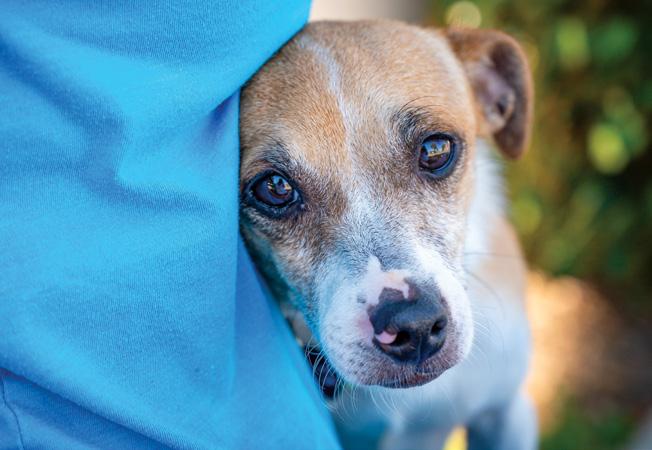
IMPROVING ANIMAL WELFARE ACT ENFORCEMENT
In June, Reps. Raja Krishnamoorthi (D-IL) and Nancy Mace (R-SC) reintroduced the Animal Welfare Enforcement Improvement Act (AWEIA; HR 3859) in response to the egregious failures by the US Department of Agriculture to properly enforce the Animal Welfare Act (AWA) with respect to licensing of animal dealers and exhibitors. The AWEIA would require annual license renewal, prevent license holders who repeatedly violate the law from renewing their licenses without additional oversight, and ensure that licenses are revoked when repeat violations affect animal well-being. That same month, the Congressional Animal Protection Caucus held a briefing on the AWA, focusing on the AWEIA, as well as Goldie’s Act (HR 1788), which addresses inspections and confiscations, and the Puppy Protection Act (HR 1624), which would require dog breeders to meet improved standards of care.
HELPING HOMELESS PEOPLE AND PETS
Reps. Jason Crow (D-CO), Brian Fitzpatrick (R-PA), Adam Schiff (D-CA), and Nancy Mace (R-SC) reintroduced the Providing for Unhoused People and Pets (PUPP) Act (HR 3957). This bill would make funding available to enable service providers to accommodate homeless individuals and families who have companion animals with both housing and supportive services, such as veterinary care.
PORK INDUSTRY PALS TRY TO TORPEDO PROP 12
In May, as noted on page 4, the US Supreme Court upheld California’s ban on certain forms of extreme confinement for farmed animals in California and the in-state sale of eggs and meat from facilities anywhere that use such methods. Seeking to thwart this animal welfare victory, Rep. Ashley Hinson (R-IA) and Sen. Roger Marshall (R-KS) have introduced the Ending Agricultural Trade Suppression (EATS) Act (HR 4417/S 2019)—designed to prohibit state and local governments from banning the sale of agriculture products within their borders based on “preharvest production” methods (e.g., gestation crates for pregnant sows, battery cages for egg-laying hens, and veal crates). Hinson’s state, Iowa, is far and away the top pork-producing state.
EATS Act ramifications would extend beyond animal welfare protections. State laws that address any aspect of preharvest production—including pesticide use, pollution standards, and even child labor—could potentially be nullified. During the two previous Farm Bill cycles, former representative Steve King (R-IA) tried to attach similar language to omnibus bills but met with
bipartisan opposition. Hopefully, the EATS Act proves similarly unpalatable to legislators on both sides of the aisle.
SANER SOLUTIONS TO WILDLIFE MANAGEMENT
Two bills were introduced to curb cruel, costly, and dangerous wildlife management methods. In May, Reps. Dina Titus (D-NV) and David Schweikert (R-AZ) reintroduced the Wild Horse and Burro Protection Act (HR 3656), a bill to prohibit the inhumane and expensive use of helicopters to round up wild equines from the range. In June, Reps. Jared Huffman (D-CA) and Steve Cohen (D-TN) and Sen. Jeff Merkley (D-OR) reintroduced Canyon’s Law (HR 4068/ S 1940) to remove M-44s (a.k.a “cyanide bombs”) from the arsenal of devices deployed for wildlife “management” on public lands. These cruel spring-activated devices, which spray sodium cyanide into the mouths of animals, are used by the USDA’s Wildlife Services program as a form of lethal wildlife management. The devices endanger humans and inflict painful deaths on native predators as well as nontarget animals (including endangered species) and companion animals.
government affairs GOVERNMENT AFFAIRS
MARY LYNN STRAND
8 AWI QUARTERLY FALL 2023
PROTECTING HORSES FROM SLAUGHTER AND UNSAFE TRANSPORT
AWI worked closely with Reps. Vern Buchanan (R-FL) and Jan Schakowsky (D-IL) and Sens. Bob Menendez (D-NJ) and Lindsey Graham (R-SC), on the reintroduction of the Save America’s Forgotten Equines (SAFE) Act (HR 3475/S 2037) in May. The SAFE Act—which would permanently shut down the horse slaughter industry in the United States—builds on existing statutory language (passed in the 2018 Farm Bill) that prohibits the slaughter of dogs and cats for human consumption. In June, Reps. Steve Cohen (D-TN), Brian Fitzpatrick (R-PA), and Dina Titus (D-NV) reintroduced the Horse Transportation Safety Act (HR 4241), a bill that would prohibit the inhumane and unsafe interstate transport of horses in a motor vehicle containing two levels stacked on top of one another.
LEGISLATORS FLOAT WRONG MOVES ON RIGHT WHALES

Vessel strikes continue to be one of the leading threats facing critically endangered North Atlantic right whales (NARW). Slowing down vessels is the only proven way to avoid these deadly strikes: Reducing vessel speeds to 10 knots has been shown to decrease risk of NARW death by more than 80 percent.
Currently, a National Oceanic and Atmospheric Administration vessel speed rule requires vessels 65 feet in length or greater to travel at 10 knots or
less in specific areas and during specific times of year to avoid lethal vessel strikes. NOAA is proposing to amend this rule to cover broader geographic areas and times, determined by NARW calving season, and to apply the rule to vessels 35 feet in length or greater. Three of the four known vessel strike events involving mothers and calves since 2020 involved vessels between 35 and 65 feet long.
However, several measures introduced in Congress—including S 1833 by Sens. Joe Manchin (D-WV) and John Boozman (R-AR), HR 4323 by Rep. Earl L. “Buddy” Carter (R-GA), and an amendment to the National Defense Authorization Act (NDAA) by Rep. Jeff Van Drew (R-NJ)—seek to prevent the speed rule from being amended until monitoring technologies are available to help reduce vessel strike risks in near-real time, presumably lessening the need for speed restrictions. However, such technologies and related protocols capable of sufficiently mitigating vessel strike risk do not yet exist. Moreover, last year’s authorization by Congress to advance these technologies went unfunded, meaning we are still years away from implementation.
Fighting these measures and advancing the rule is one of our top priorities for the 118th Congress. In early July, AWI and over 40 animal welfare and environmental groups worked hard to stop the Van Drew amendment from being included in the NDAA. While this was an immense win, continued efforts in Congress to block speed limits in NARW habitat portend stormy seas ahead before the final rulemaking.
TAKE ACTION: Visit AWI’s online Action Center (awionline.org/action-center) to urge your US representative and senators to oppose the EATS Act and legislative efforts to block urgent steps to save North Atlantic right whales. If sending letters by mail, use the following addresses: The Honorable [full name], US House of Representatives, Washington, DC 20515 and The Honorable [full name], US Senate, Washington, DC 20510.
GOVERNMENT AFFAIRS
FWC/TUCKER JOENZ/NOAA FISHERIES (PERMIT 18786)
9 AWI QUARTERLY FALL 2023
This right whale calf died after a high-speed collision with a 54-foot boat. NOAA’s proposed speed restrictions will help prevent such tragedies—unless efforts in Congress to scuttle them succeed.
In Lucrative Primate Trade, Enforcing the Law Makes Industry Cry Foul
Recent developments regarding imports of endangered longtailed macaques for experimentation underscore the role that financial incentives play in the primate trade, and shed new light on industry efforts to keep the import pipeline open.
In the latest example, the National Association for Biomedical Research (NABR)—an industry-funded animal research lobbying group—filed a petition in June with the International Union for Conservation of Nature (IUCN) challenging IUCN’s reclassification of long-tailed macaques as “endangered.”
NABR is interested in IUCN classifications because they strongly influence wildlife trade restrictions under the Convention on International Trade in Endangered Species of Wild Fauna and Flora (CITES). The United States, a party to this treaty, applies CITES criteria in deciding whether and how it will allow imports of CITES-listed species such as the longtailed macaque.
A DAMNING CHRONOLOGY
In February, Charles River Laboratories (CRL), the largest user of monkeys for experimentation, disclosed to the Securities and Exchange Commission that the US Fish and Wildlife Service had “denied clearance to certain shipments” of nonhuman primates from Cambodia to CRL. Shortly thereafter, NABR posted on its website a link to a February 13 letter from the USFWS to a company (whose name was removed), stating that the agency was denying the company’s application to import long-tailed macaques because (after over two months of review) it could not confirm the monkeys were captive-born, as required under CITES.
NABR used this letter to allege a fundamental change in US import policy. In reality, the USFWS was enforcing existing US policy on a specific, questionable shipment. The agency confirmed this to Science magazine in May, pronouncing that it “has not implemented any new policies banning the importation or exportation of non-human primates” (emphasis in original).
In its February 13 letter, the USFWS noted that its decision was informed by the federal indictment in November 2022 of eight people, including two Cambodian wildlife officials, alleging an international conspiracy to smuggle thousands of Cambodian long-tailed macaques who had been fraudulently listed as captive-born into the United States for experimentation. (See AWI Quarterly, winter 2022.) The USFWS spearheaded the years-long criminal investigation that led to the indictment.
Two weeks after that indictment, CRL told the SEC that it had no direct supply contracts with the Hong Kong–based supplier entangled in the alleged conspiracy Science subsequently reported that Inotiv—which advertises itself as the world’s “largest and most trusted source of nonhuman primates” (and describes the monkeys it sells in a “product sheet”)—had received the allegedly laundered monkeys, and that employees of its principal supplier had been named in the indictment. Inotiv has reported to the SEC multiple federal grand jury subpoenas relating to primate imports. It delayed reporting its financial results—which included $140 million (a quarter of all company revenue) from the sale of Cambodian monkeys—because of the need to assess the ramifications of the indictment.
On February 17—four days after the USFWS rejected the unidentified company’s shipment because it could not confirm captive-born status—CRL received a subpoena from the Department of Justice related to its monkey imports from Cambodia. CRL (which lists the animals it sells under “products-services”) disclosed the subpoena during an earnings call and announced it was suspending nonhuman primate shipments from Cambodia “at this time.” Afterwards, a stock analyst estimated that this pause could cost CRL $80 million to $160 million in sales.
On February 27, NABR issued a “crisis” action alert— claiming that 60 percent of the preclinical nonhuman primate models critical to “the pipeline for lifesaving medical advancements” were being denied import permits. NABR’s alert doesn’t mention that Cambodia is the source of approximately 60 percent of primate imports, nor does it acknowledge the serious charges in the indictment or the impact on research integrity if wild-born primates are being smuggled in under falsified paperwork. Separately, NABR criticized the USFWS for not issuing any public notice regarding the import denials—which, again, was not a change in policy.
On June 15, after its pressure on the USFWS failed to produce an actual change in policy, NABR filed its petition with IUCN— 15 months after IUCN reclassified long-tailed macaques as “endangered.”
10 AWI QUARTERLY FALL 2023
MONEY TALKS, BUT NASEM STAYS MUM

In IUCN’s March 2022 assessment that these monkeys are endangered—warning that they could become extinct in 50 years—it stated that research demand was “threatening the species” and that the “research industry needs to become accountable.”
In May 2023, the National Academies of Sciences, Engineering and Medicine (NASEM) released a 248-page report on primate research and supply. Data from the report indicate that, in fiscal year 2021, more than 42 percent of labs that used or held primates were for-profit entities—by far the largest category. AWI’s analysis of more recent data shows that CRL alone accounted for 23 percent of all such use, experimenting on over 16,000 monkeys. The top two users—CRL and Labcorp—accounted for 33.6 percent and reported almost $19 billion in revenue between them.
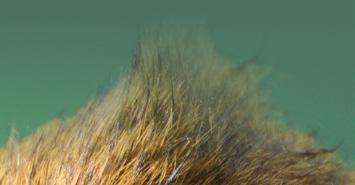
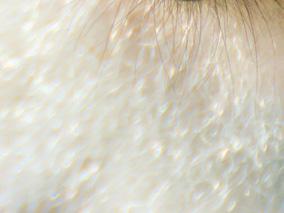
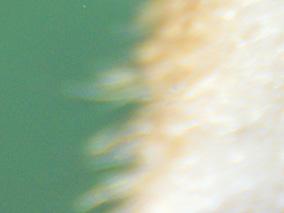

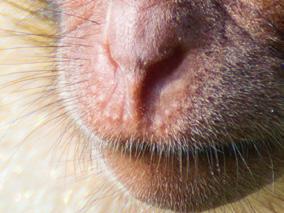
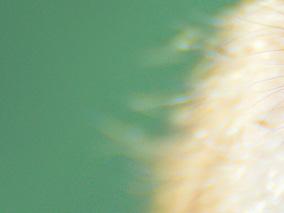
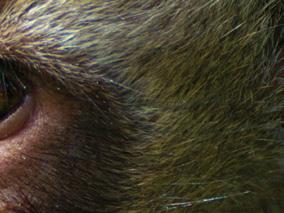
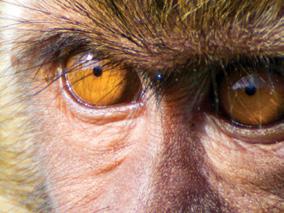
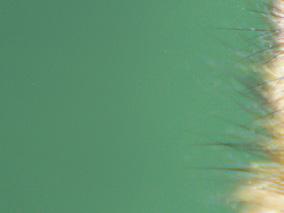

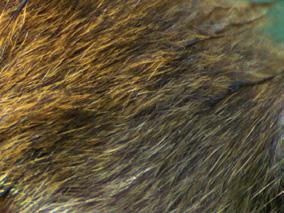
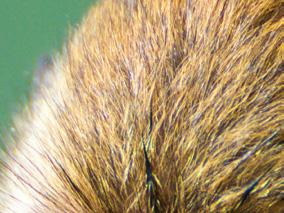

When the NASEM report was published, AWI criticized the organization for failing to address financial incentives. Inotiv and CRL—the largest supplier and largest user of monkeys in research, respectively (and the top two suppliers of all animal species for research)—have garnered hundreds of millions of dollars in revenue relating to the trade in monkeys from Cambodia. Overall, the trade in long-tailed macaques has been valued at over a billion dollars—and that was before the COVID pandemic, when prices skyrocketed. As the alleged criminal conspiracy aptly illustrates, the allure of big money can put big pressure on endangered wildlife.
NABR represents the interests of multiple industry players, but in CRL’s case, the bond runs particularly deep: NABR’s board of directors has for years included CRL’s vice president for global procurement, and CRL played a foundational role in the creation of NABR. CRL was also listed last year




at the highest donor tier of “Benefactor” ($50,000 to $100,000) for NABR’s sister organization, the Foundation for Biomedical Research (FBR). All listed “Benefactors” have supplied, or experimented on, nonhuman primates. (NASEM invited Matthew Bailey—president of both NABR and FBR—to its public meeting in August 2022 and cited his presentation in its report. Tellingly, NASEM did not invite any animal protection organizations.)
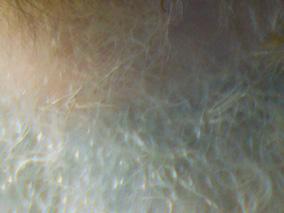


NABR is correct about a “crisis,” but not the one it claims. NABR apparently believes that if the industry filling its coffers has issues with endangered species protections, then those protections should be gutted. The chronology outlined here—indictment to blocked shipments to CRL subpoena to “crisis” alert to pressuring the USFWS to IUCN petition—speaks volumes. It exemplifies why financial incentives must be addressed to save these endangered monkeys from extinction.

TUNATURA 11 AWI QUARTERLY FALL 2023
AWI offers two funding opportunities to improve the lives of animals in research—one to enable implementation of existing refinement resources and the other to spur creation of new refinements.
TWO FUNDING OPPORTUNITIES FOR ANIMALS IN LABS
Calling on those who work with animals in research laboratories in the United States or Canada and strive to improve their welfare: AWI now has two funding opportunities—one to enable implementation of existing animal care refinements and the other to develop and test innovative new methods to improve the welfare of animals in laboratories.
AWI’s new Implementing Refinement Grant program provides grants of up to US$8,000 to purchase equipment or train staff in care, husbandry, and handling techniques that will improve the welfare of animals in laboratories. Grant money can be used to purchase enrichment or other items (e.g., handling tunnels for mice, perches for monkeys, or tank substrate for zebrafish) or register for training workshops or courses (e.g., to learn how to tunnel-handle mice or safely pair-house monkeys).
AWI is also continuing its longstanding Refinement Research Award program—which funds innovative research projects designed to test and/or develop new refinement methods that have the potential to improve the welfare of animals in laboratories. This year, the maximum amount per grant has been increased to US$15,000.
The deadline to submit proposals for both funding opportunities is
November 10, 2023. For more information and to apply, please visit awionline.org/ implementation-grant or awionline.org/research-award, or scan the QR code at right.

3D PRINTING FOR CONSERVATION
In 2020, Drs. Constance Woodman and Giridhar Athrey of Texas A&M University were awarded an AWI Refinement Research Award for a study investigating the toxicity of various 3D printing materials to assess their suitability for creating custom (and inexpensive) enrichment for animals in laboratories. (See AWI Quarterly, fall 2022.) Today, Woodman is using the results of this study for a different purpose—designing a new device to aid in the conservation of endangered bird populations.
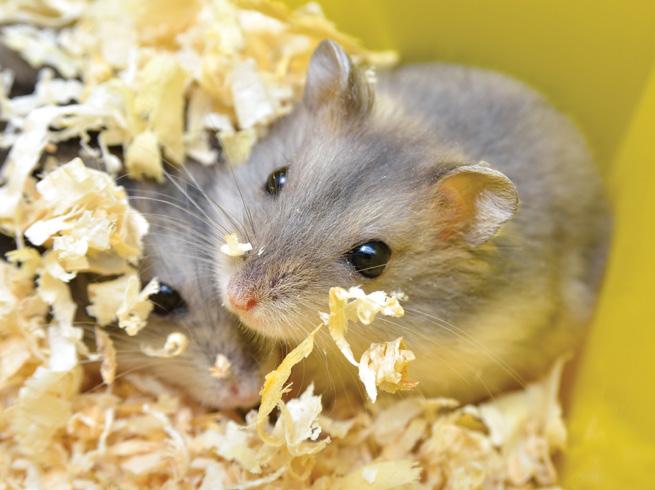
Woodman and colleagues created a “smart egg” that records the conditions inside birds’ nests, such
as temperature, sounds, and egg rotation patterns (mother birds turn their eggs to promote normal chick development). Conservationists often remove endangered birds’ eggs from their parents’ nests to incubate them artificially, away from predators and other dangers. The offspring are returned to the nest during or soon after hatching. The success of artificial incubation depends on adequate rearing conditions, which are unique to each species. The data provided by the smart eggs will allow conservationists to better replicate natural conditions inside incubators and, ultimately, improve hatching success.
The eggs designed by Woodman and colleagues are made with a 3D printer using materials Woodman determined to be safe through her AWI-funded study. “I was able to run a number of chemical tests on different types of 3D printing processes to make sure it was nontoxic and safe for the animals,” Woodman said. “That was a very big relief for me.”
ANIMALS IN LABORATORIES animals in laboratories
OLEKSANDRUM
12 AWI QUARTERLY FALL 2023
ADVANCING THE ARGUMENT AGAINST MARINE MAMMAL CAPTIVITY
The 6th edition of The Case Against Marine Mammals in Captivity (CAMMIC), published by the Animal Welfare Institute and World Animal Protection, was unveiled in July. Since its 1st edition in 1995, this report has served as a resource—for advocates, students, media, policymakers, and anyone else interested in the welfare of captive marine mammals—on the many scientific and ethical arguments against holding these wide-ranging and complex species in zoos and aquariums. CAMMIC’s 5th edition, published in 2019, discussed the Blackfish Effect—a reference to the many policy and societal changes that came after the release of the groundbreaking documentary focused on a captive orca named Tilikum who killed his trainer at SeaWorld Orlando in 2010. These changes have put the captive marine mammal industry on the ropes, and over the last few years, the industry has aggressively sought to remain relevant by promoting claims
that it (1) safeguards the welfare of its animals, and (2) is essential to conservation as a sort of Noah’s Ark for endangered species, including cetaceans. A new chapter in the 6th edition of CAMMIC critiques research recently produced by the industry in its attempts to support these claims.
ADVOCATING END TO CETACEAN CAPTIVITY IN EUROPE
Since 2014, AWI has supported the work of Dolphinaria-Free Europe (DFE), a coalition of European NGOs who work to help the approximately 300 whales, dolphins, and porpoises held for display and research in the European Union. In order to raise the profile of captive cetacean welfare in the European Union, the coalition—working with Francisco Guerreiro, a member of the European Parliament (MEP) for Portugal— gave presentations in Brussels to an in-person audience of MEPs and advocates and to members of the public who joined the live-stream
of the event. AWI’s Dr. Naomi Rose was one of the presenters and helped prepare a DFE policy brief given to every MEP. DFE held a members meeting after the event, the first since well before the COVID-19 pandemic. A two-year plan was developed and tasks assigned; DFE intends to return to the European Parliament next year, after the 2024 elections in early summer, to push for legislative change that would phase out the display of these wide-ranging predators.
GRAY WHALES IN STEEP DECLINE

After peaking at nearly 27,000 whales in 2016, the population of eastern North Pacific gray whales has plummeted to around 14,500 in 2023—a startling 46 percent decline and nearly 7,000 fewer animals than when the gray whale’s Endangered Species Act protections were removed in 1994. The precipitous decline may be linked to climate change, as ocean temperatures warm, causing shifts in prey availability and other changes to summer feeding grounds in the Arctic. Known causes of gray whale deaths include ship strikes, entanglement in fishing gear, and hunting by Indigenous whalers in Russia. In 2021, an administrative law judge recommended that a waiver be issued under the Marine Mammal Protection Act to allow gray whale hunts by the Makah Tribe of Washington. AWI strongly opposes this potential waiver, particularly given the current crisis.
In just seven years, the population of eastern North Pacific gray whales has been cut nearly in half. The cause of the die-off has not been determined, but climate change could be a factor.
marine life
MARINE LIFE
13 AWI QUARTERLY FALL 2023
JON493/WIRESTOCK CREATORS
AWI’s Kate O’Connell: Passion and Persistence in Defense of Ocean Life

After four decades in the fight to end commercial whaling worldwide, Kate O’Connell, senior policy consultant for AWI’s Marine Life program, is on a first-name basis with virtually every major player impacting the cetacean protection movement. Friend or foe, they can’t help but like her. She has been known to berate fishing industry representatives in Spanish before asking how their children are doing. “I try not to dehumanize them,” Kate says of her opponents. “Everybody has something that’s important to them and you need to respect that even though you don’t agree with it—I’m working hard to change minds.”

“She’s the most brilliant person I’ve ever worked with,” says AWI senior policy advisor Sue Fisher, who has collaborated with Kate for a quarter-century. “She draws people in and draws stuff out of them. To have that analytical brain and those interpersonal skills—it’s a dangerous combination (in a good way).”
A BOLT FROM THE BLUE
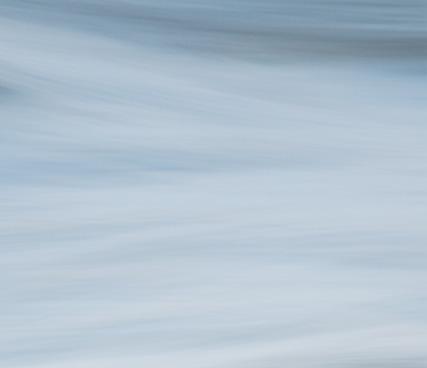


Kate grew up in Connecticut and spent summers on Long Island Sound, where her grandfather worked as a lighthouse keeper and lobsterman. As a child, she enjoyed watching “The Undersea World of Jacques Cousteau.” She joined the burgeoning Save the Whales movement as a teenager, and took her first whale-watching tour out of Provincetown, Massachusetts. On that trip, a bolt from the blue—the dark, glistening head and back of a humpback whale—broke the
surface of the water. Kate was in awe of her sheer size. “It’s the sense of wonder that they bring to you, and it kind of puts you in your place as a human,” she would reflect later.


By age 21, Kate had joined the board of what is now Cetacean Society International (CSI). Two years later, she attended her first International Whaling Commission (IWC) meeting in Buenos Aires and soon after that met AWI founder Christine Stevens—whom she remembers as passionate, gracious, and unyielding in her commitment to animal protection.

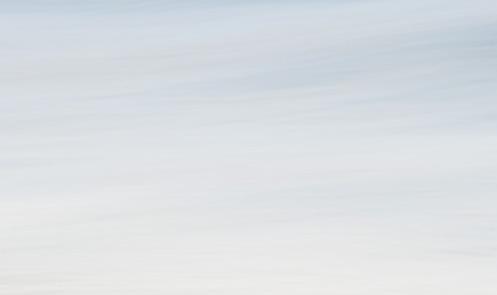
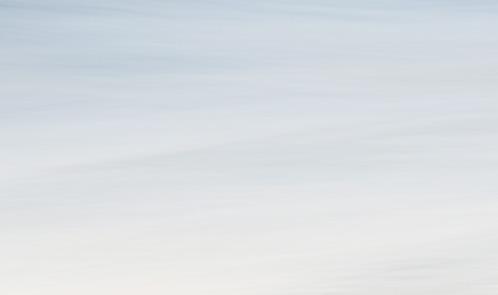
Kate studied languages (she can speed-read at least seven) and international relations, including at Cambridge University, yet she took her first job working across Latin America to help train young researchers in nonlethal whale research methods for the Long Term Research Institute (LTRI; now called Ocean Alliance), led by Dr. Roger Payne. (Payne, famous for his 1967 discovery of humpback whale songs, died in June. A tribute follows this article.) At LTRI, she helped draft the Specially Protected Areas and Wildlife (SPAW) Protocol—a key regional agreement administered by the UN Environment Programme— and helped develop the protocol’s protected species lists.
She also met her idol, actor Leonard Nimoy, during promotion of Star Trek IV: The Voyage Home. LTRI served as an advisor on the film, and Kate was involved in the subsequent Whales Alive album, featuring Nimoy reading passages from Moby Dick and Paul Winter on soprano sax, accompanied by
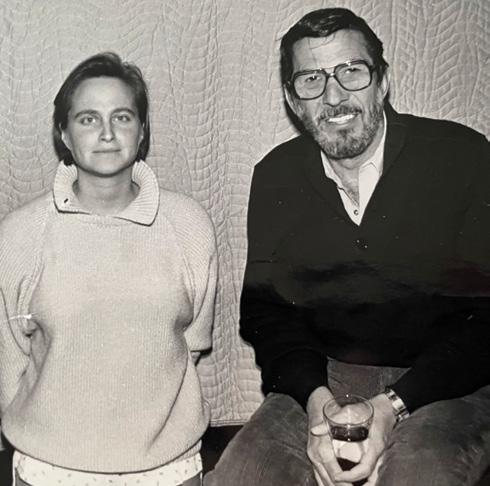
14 AWI QUARTERLY FALL 2023
humpback songs. Kate has also been tapped as an expert in a half dozen documentaries focused on protecting Amazon river dolphins, minke whales, and other marine mammals.
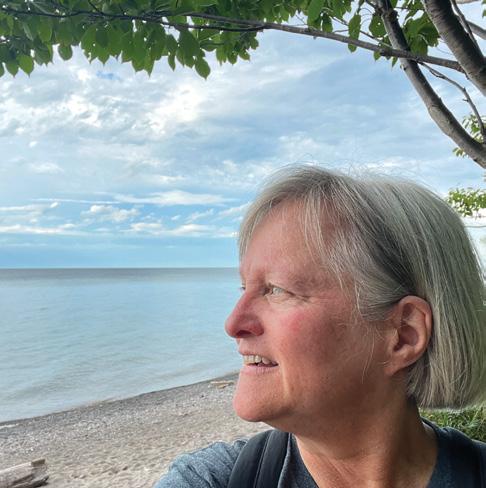



Once, Kate and her colleagues, working with local fishers in Sri Lanka to limit bycatch of nontargeted marine life, piled into a sailboat to escape an escalating civil war. While traveling from Trincomalee to the capital of Colombo, what Kate initially mistook for flying fish were instead bullets chopping the water. One lodged in her colleague’s camera bag, but the group was otherwise unharmed.
AT AWI
Kate began consulting for AWI in 2011 and appreciates the organization’s methodical, science-based approach to reducing animal suffering. Diligence in support of that approach is where Kate thrives—flying under the radar, tracking tax returns, shareholder documents, municipal whaling permits, and arcane trade databases in several languages to identify financial webs that harm endangered and threatened wildlife.
From 2011 to 2014, as part of a joint investigation by AWI, the Environmental Investigation Agency, and Whale and Dolphin Conservation, Kate followed the money (and blood) trail of trucks carrying fin whale meat across Iceland to fish processing and storage facilities linked to seafood giant HB Grandi. Slayed in Iceland, the investigation’s final report, exposed the links between Hvalur—Iceland’s sole fin whaling company—and some of the country’s largest companies, including HB Grandi. (At the time, HB Grandi was financially intertwined with Hvalur and chaired by Hvalur CEO Kristján Loftsson.) In the following years, as Kate spearheaded a “Don’t Buy from Icelandic Whalers” coalition campaign aimed at commercial seafood buyers, Hvalur and Loftsson gave up their financial and governing interests in HB Grandi.

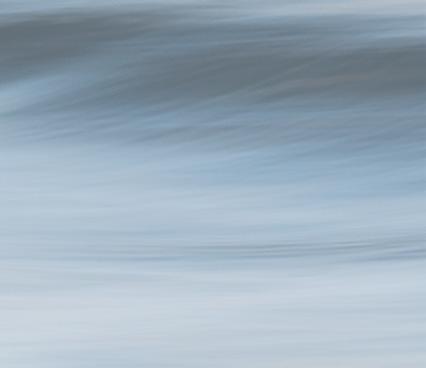
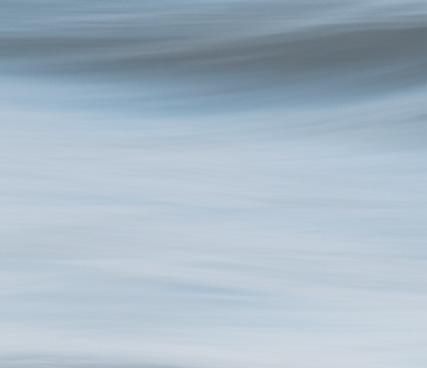
“How does she do it?” says Jessica Dickens, president of CSI, where Kate still serves on the board. “She must stay up
all night scouring news outlets and websites in all different languages because in each meeting she could talk globally about what was happening to whales all around the world.” But Kate is not all work. Along the way, she carved out the time to raise a daughter and three stepsons, and during her down time enjoys watching Nordic-language detective shows and playing the bodhrán, a traditional Irish drum.
In 2017, Kate helped found Make Stewardship Count, an international coalition of more than 90 nongovernmental organizations working to improve the Marine Stewardship Council’s sustainable seafood certification program, in particular as it relates to bycatch and shark finning. Currently, she is working to encourage federal regulators, lawmakers, and industry leaders to expand mandatory vessel speed restrictions and transition to ropeless fishing gear to protect the critically endangered North Atlantic right whale.
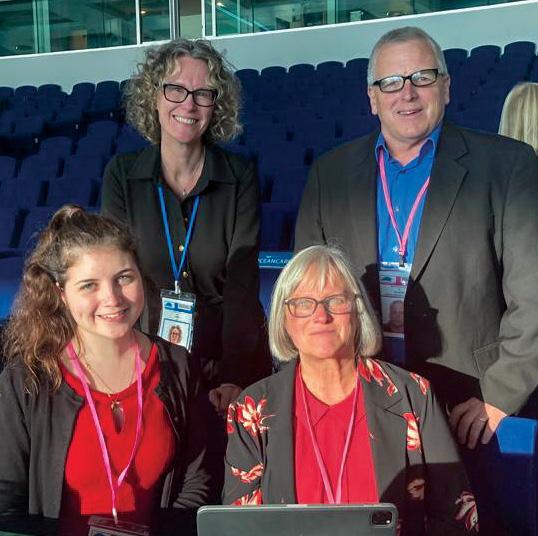

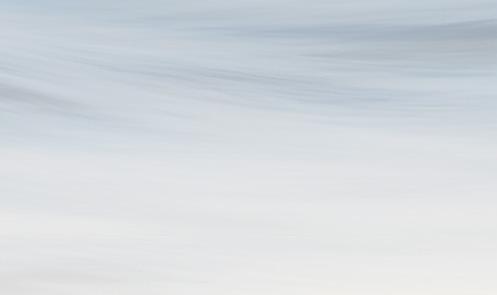

A natural optimist, Kate focuses on progress made. Reflecting on a time when 100,000 dolphins were killed each year in eastern Pacific tuna nets, she notes that the number has since plummeted to below 1,000 (“still 1,000 too many,” she says). And today, only three commercial whaling nations remain— Norway, Japan, and Iceland—the last of which suspended this year’s fin whaling season through August 31 over welfare concerns, and has not engaged in minke whaling since 2021.
After four decades, Kate is perfectly willing to pass the baton to the next generation of marine mammal advocates. “Things need to evolve and adapt,” she reasons. “It works for ecosystems.” She won’t, however, walk away from the cause. “We’re just part of this great whole and that’s why we need to protect these animals, respect their welfare, and conserve their habitat,” she says. “They enrich our lives in so many ways.”
15 AWI QUARTERLY FALL 2023
Photos left to right: Kate with CSI cofounder Dr. Robbins Barstow at 1984 IWC meeting in Buenos Aires; with Leonard Nimoy in NYC recording studio; with AWI colleagues at 2022 IWC meeting in Slovenia; at Chimney Bluffs State Park, NY
A Life Among Whales: Roger Payne’s Legacy in Patagonia, Argentina
by Roxana Schteinbarg, Cofounder and Coordinator of Conservation Programs, Instituto de Conservación de Ballenas
On Saturday, June 10, 2023, Dr. Roger Payne, 88, passed away, surrounded by the love of his family at his home in Vermont. Roger maintained his clarity and wisdom until the final moment.
He always needed to find answers to new questions, and often felt that science was not enough. Roger was frequently considered a rule-breaker, given his propensity to share theories about whales that had not yet been scientifically proven. He did this because he was convinced that the amount of time needed to generate change did not correspond to the timescale of science. Roger considered it necessary to awaken people’s fascination for whales, and he did so with his recordings of humpback whale songs that mobilized thousands of
people. This catalyzed the Save the Whales movement, which culminated in a great victory when the International Whaling Commission (IWC) established a moratorium on commercial whaling that went into effect in 1986.
Although Roger studied whales in numerous expeditions in all the seas of the world, his heart found its home with the right whales of Península Valdés in Patagonia, Argentina.
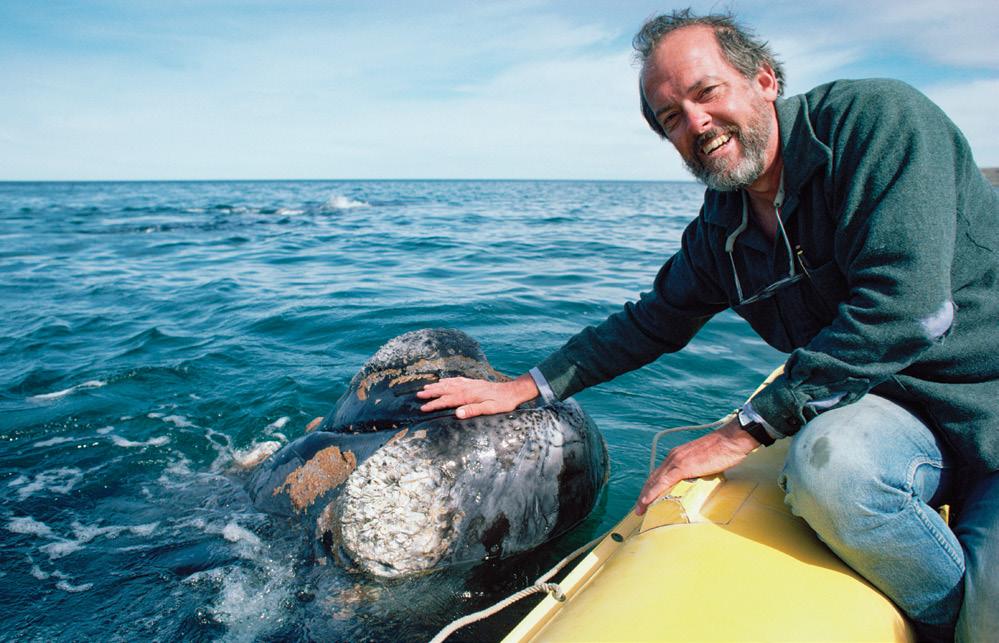
In order to study whales and demonstrate that it was not necessary to kill them to learn about them, he developed several benign research techniques. He was convinced that the best knowledge about animal behavior was obtained from long-term studies of known individuals. It was then that he read a report mentioning the record of southern right whales off the coast of Península Valdés. Drawn by his curiosity, Roger traveled to Argentina in 1970, never imagining all that would
follow and how his experiences and his family’s in Patagonia would fill his heart.
In 1971, already settled with his family in a camp on the shore of San José Gulf, he discovered that southern right whales could be individually identified by the pattern of callosities on their heads. This was the beginning of a scientific program that is currently the world’s longest continuously running study tracking individual whales throughout their lives. This is the great legacy that Roger left to Argentina’s Instituto de Conservación de Ballenas (ICB), its founders (Diego Taboada, Mariano Sironi, and me) and an amazing team of people deeply committed to the science and conservation of whales in Argentina.
Some of the first whales that Roger identified were Troff and Pionera, whales who continue to return to Península Valdés and are part of a whale adoption program. Their life stories and those
16 AWI QUARTERLY FALL 2023
FLIP NICKLIN / MINDEN PICTURES
of the more than 4,300 identified whales fascinate and attract, and their individuality moves us to protect them.
Today there are many of us who, inspired by Roger, dedicate our lives to research, environmental education, and conservation. Following Roger’s example, the ICB team continually asks questions in order to learn about whales on a changing planet and seeks to mitigate the threats whales face in the ocean. In the footsteps of Roger and Dr. Vicky Rowntree, ICB researchers conduct scientific studies that are presented at the IWC and other international forums. The Animal
Welfare Institute supported Roger Payne in his pioneering studies and continues to help fund the work of our researchers and conservationists, using science to influence the conservation of whales and the marine environment.
Roger said, “I came to Patagonia hoping to find a species whose individuals I could recognize and a place where I could study them with relative ease. But most importantly, we discovered the land and people of Argentina; for me it was love at first sight.”
Life comes to an end, but the thoughts and teachings Roger left us remain.
For those of us who founded the ICB in Argentina in 1996, and for those who over the years have joined the team, Roger will always be a source of inspiration. As he came to the end of his life, Roger expressed his deep gratitude to each and every one of the people who made Península Valdés his heart’s home. He left empowered, at peace, full of wisdom, and with more questions to keep answering.
Thank you, Roger, for your legacy, for your friendship, and for being a source of inspiration. Safe travels, my friend forever, wherever you are.
by Susan Millward, AWI Executive Director and CEO
Dr. Roger Payne had a long history with AWI—having joined AWI’s Scientific Advisory Committee in 1976 and continuing to serve on that committee for 45 years. While Roger is known for his groundbreaking discoveries of the “songs” in humpback whale vocalizations, his dedication to learning more about whales, educating others about them, and, above all, conserving them, was incredible.

Roger’s connection with AWI began when he met AWI’s founder, Christine Stevens, in the early 1970s as they campaigned to end commercial whaling at the IWC. This led to the foundation of the Save the Whales movement, a massive global campaign that in the next decade would result in the establishment of a commercial whaling moratorium—a ban that endures to this day. Roger’s work with Christine and others on behalf of this movement was immense. Roger and Christine’s friendship endured long after the moratorium victory, and they spent countless hours together battling to protect whales—at the IWC, on
Capitol Hill, and in strategy sessions at Christine’s home in Washington, DC.
Roger’s long scientific career extended beyond saving whales from needless slaughter, as Roxana so adeptly explains above, but it was through the IWC that AWI and Roger’s paths mainly intertwined. In 2010 in Agadir, Morocco, Roger took part in a press conference with other whale conservationists to call attention to the toxins and pollutants being dispersed
throughout the world’s oceans and traveling up the food chain. I was also at that meeting—having joined AWI seven years earlier—and remember Roger’s dedication and passion for doing right by whales.
Roxana and her colleagues, along with AWI and many other whale protectors, owe so much to Roger, and through his legacy will continue the good fight for the world’s whales and their ecosystems.
17 AWI QUARTERLY FALL 2023
Using DNA in Footprints to Track Polar Bear Populations

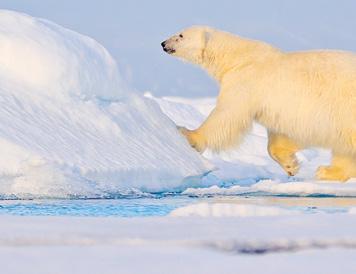
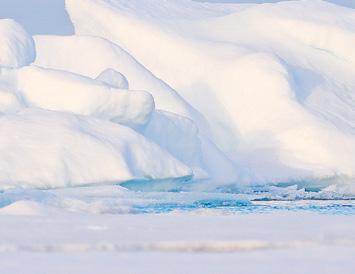 by Andrew L. Von Duyke, North Slope Borough Department of Wildlife Management; Jennifer Adams and Lisette Waits, University of Idaho; Justin Crawford and Lori Quakenbush, Alaska Department of Fish and Game
by Andrew L. Von Duyke, North Slope Borough Department of Wildlife Management; Jennifer Adams and Lisette Waits, University of Idaho; Justin Crawford and Lori Quakenbush, Alaska Department of Fish and Game
The Arctic is warming faster than anywhere on Earth, and polar bears—listed as “threatened” under the Endangered Species Act—are at risk due to decreasing sea ice habitat. Monitoring polar bear populations is important for their conservation and management, but is also challenging because they occupy vast, remote, and extreme regions. With the loss of sea ice, conventional monitoring methods (including expensive aerial overflights) are becoming less reliable. Some of these methods are also invasive (e.g., physical capture, chemical immobilization, and satellite collaring), which has been of concern to local Indigenous communities, conservationists, and researchers.
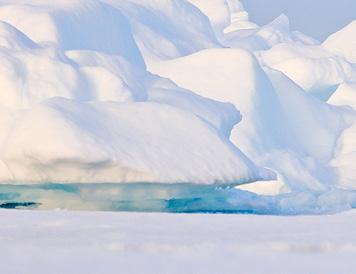
An emerging field with great potential to monitor populations while also addressing some of the aforementioned challenges is the analysis of genetic material (DNA) shed by animals into their environment (e-DNA). Though e-DNA has long been applied to species detection, its use in population monitoring is trickier because it requires the identification of individuals and their sex. Thus, earlier analytical results of e-DNA in snow have been limited to detection of species presence.
A Christine Stevens Wildlife Award from AWI supported our efforts to determine polar bear individual identity and sex using e-DNA in snow and to assess e-DNA as a potential new tool for non-invasively monitoring polar bear populations. We also wanted to better understand which factors (e.g., environmental variables, field and lab protocols) affected the success rate of e-DNA extraction, amplification, and lab analysis. Our intent was to use this information to guide our efforts at further
refining this method in the hope that it could become a useful tool for understanding polar bear population biology.
To collect e-DNA from wild polar bears in northern Alaska, we sampled the upper layer of snow (~1 cm) from their footprints. The snow was thawed and filtered to capture DNA—in the form of epidermal cells shed from the bear’s foot pads—for genetic analysis. Our initial efforts demonstrated that identifying polar bears was plausible. Further incremental refinements suggested that the number of footprints sampled and their relative “freshness” were good predictors of e-DNA yield and the potential for individual genotyping. After a pause in fieldwork due to the COVID-19 pandemic, we resumed our efforts in 2021, and our data again verified the presence of polar bear e-DNA at concentrations amenable to further genetic analysis. To date, we have successfully determined the identity and sex of 16 individual polar bears. On average, our genotyping success rate is equivalent to other non-invasive methods (e.g., hair DNA, fecal DNA). Building upon these results, our current efforts are focused on maximizing efficiency and applying this new tool to addressing important conservation and management questions for polar bears in northern Alaska.
Our results provide the first evidence that e-DNA collected from footprints in snow can be used to identify individual wild polar bears and their sex. Consequently, this method has potential as a useful, non-invasive tool for biologists to genetically monitor polar bear populations as well as other species that occupy remote, challenging, snow-covered regions.


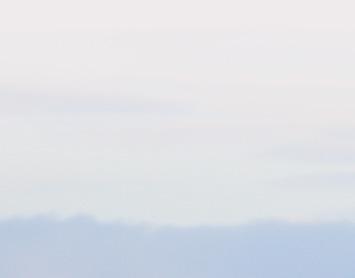
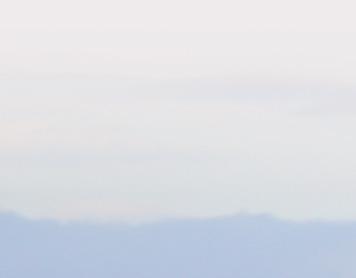
ONDREJPROSICKY 18 AWI QUARTERLY FALL 2023
CITES ANIMALS COMMITTEE RESUMES IN-PERSON MEETINGS
Over 260 representatives of nearly 50 countries and more than 60 organizations met in Geneva in June at the 32nd meeting of the Animals Committee to the Convention on International Trade in Endangered Species of Wild Fauna and Flora (CITES)—the committee’s first in-person meeting since 2018 due to the COVID-19 pandemic.
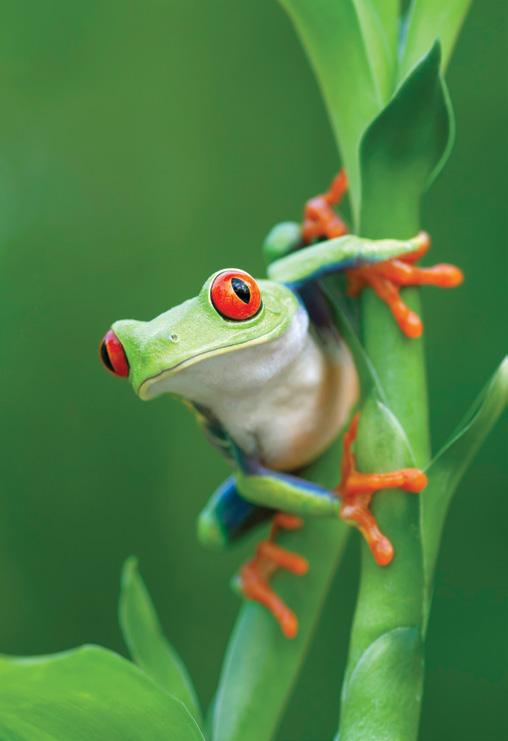
To ensure that the committee could get through its robust agenda, intersessional working groups were formed to facilitate future in-depth discussions on a number of matters, including the role of CITES in reducing zoonotic disease risk, evaluating trade in animals and plants not taken from the wild, and identifying species in need of CITES protection. Expert workshops delayed by the pandemic will also proceed on amphibian conservation, trade in songbirds and marine ornamental fish, and other issues.
As required after each meeting of the CITES Conference of the Parties (CoP)—the most recent having taken place in November 2022—the Animals Committee focused on selecting species/country combinations for review of significant trade (RST) and for captive breeding (CB) review to ensure compliance with the convention. RST primarily involves Appendix II–listed species (for which trade is regulated to prevent the threat of extinction), while CB review applies to CITES-listed species purportedly bred in captivity.
The committee added 21 species/country combinations to the RST process, including saker falcons in Jordan; Russian tortoises in Uzbekistan; black marsh turtles in Indonesia; and ball pythons in Ghana, Benin, and Togo. Marine species included all mobula ray species in Sri Lanka; great hammerhead sharks in Mexico; scalloped hammerhead sharks in China, Indonesia, Kenya, Mexico, Nicaragua, Oman, Sri Lanka, and Yemen; and oceanic whitetip sharks in Kenya, Oman, Senegal, and Yemen. The CITES secretariat will also ask Greenland why it has resumed trade in narwhal specimens after it agreed in 2006 to suspend such trade until it produced a credible “non-detriment finding” (a key CITES requirement to ensure trade does not harm wild populations).
The same number of species/country combinations were selected for CB review due to concerns about significant increases or high numbers of the species in trade, shifts from wild to captive sources, trade from nonrange states, and/or trade in species known to be difficult to breed in captivity. These included MacQueen’s and Houbara bustards from Kazakhstan and Morocco, respectively; black spinytail iguanas and redeyed tree frogs from Nicaragua; humphead wrasses from Indonesia; and Kihansi spray toads from the United States.
In response to a proposal from the United States, the committee also agreed to a CB review of long-tailed macaques from Cambodia, Indonesia, the Philippines, and Vietnam. These animals are extensively traded—primarily for use in biomedical research. There is substantial evidence that wild-caught macaques are being laundered as captive bred—threatening the existence of some wild populations. (See page 10 for more on this issue.)
The CITES secretariat will ask each country selected for RST and CB review to provide evidence that their trade in these species meets the convention’s requirements. If no or inadequate responses are received, the Animals Committee may recommend, at its 2024 meeting, further actions to compel compliance. That meeting will provide an opportunity to advocate strong conservation outcomes for species in preparation for the next CITES CoP in 2025.
19 AWI QUARTERLY FALL 2023
RED-EYED TREE FROG, MARK KOSTICH
NEW YORK TO OUTLAW WILDLIFE KILLING CONTESTS
After years of work by a coalition of advocacy groups, including AWI, the New York legislature passed a bill in June to ban wildlife killing contests, with certain exceptions, including contests involving white-tailed deer, turkey, and bear. This legislation, which the governor is expected to sign in coming months, will make New York the ninth state to outlaw such events. In wildlife killing contests, participants kill animals for cash or prizes based on the number, weight, or size of the animals killed. More than 20 contests took place across New York in January and February of this year. During one, at least 200 animals were killed over a three-day period, with $10,000 paid out among the 636 participants.
Principles of fair chase are frequently disregarded during killing contests, as participants use bait, night vision equipment, thermal imaging, and electronic devices to attract animals with sounds that mimic prey or distress calls of wounded young. Later, away from public view, carcasses are often dumped. An untold number of additional animals are orphaned by these contests and left to die from thirst, starvation, predation, or exposure.
Killing contests are inhumane, compromise the effective management of wildlife populations, contravene principles of ethical hunting, fail to increase game populations or reduce livestock conflicts, and harm ecosystems. This is why AWI serves on the Steering Committee of the
National Coalition to End Wildlife Killing Contests, which works at the federal and state levels to ban these cruel events.
COMBATTING WILDLIFE TRAFFICKING IN AFRICA
Each year, millions of wild animals, including imperiled species, fall victim to an illegal wildlife trade with an annual estimated value between $7 billion and $20 billion. Wildlife trafficking causes population declines and results in immense suffering whenever live animals are involved. Combatting this trade is difficult, as poachers are often better equipped than enforcement personnel, employ constantly evolving smuggling strategies, and are often enabled by corruption within the judiciary and enforcement agencies.
In some countries, wildlife protection organizations help agencies combat wildlife trafficking. Two such organizations are Eco Activists for Governance and Law Enforcement
(EAGLE) and Saving the Wild (STW), both supported by AWI.
EAGLE and its subsidiaries are active in nine African countries (Burkina Faso, Cameroon, Congo, Gabon, Guinea, Ivory Coast, Senegal, Togo, and Uganda), working to combat illegal wildlife trade by gathering intelligence, planning enforcement operations, and exposing corruption. In 2021 and 2022, it facilitated the arrest of over 300 wildlife criminals (including traffickers of elephants, pangolins, big cats, and primates), rescued 20 primates, and exposed 16 incidents of corruption.
Since 2016, STW-collected intelligence has led to the arrest of several rhino poachers in South Africa and Mozambique. It also exposed corruption within South Africa’s judiciary and its wildlife enforcement units, resulting in the suspension, removal, or arrest of judges, magistrates, and rangers. STW’s work has helped contribute to a decline in rhino poaching in South Africa from approximately 1,200 in 2014 to less than 450 in 2022.
AWI is helping on-the-ground organizations in Africa thwart wildlife poachers and traffickers and expose corruption in enforcement agencies and the judiciary.
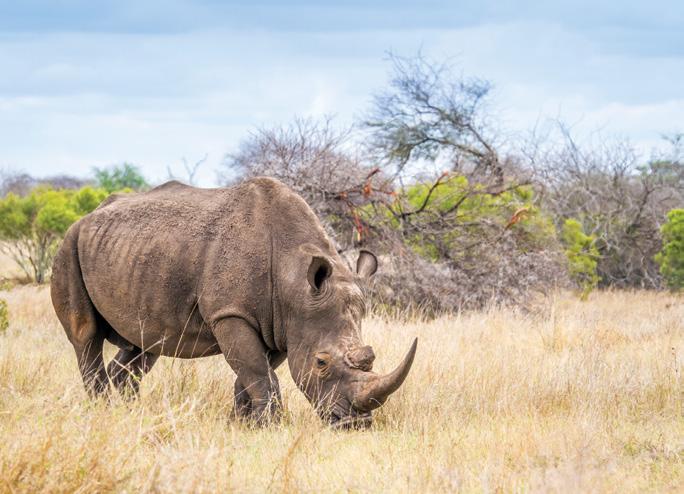
terrestrial
PACO COMO TERRESTRIAL WILDLIFE
wildlife
20 AWI QUARTERLY FALL 2023
AWI SUES BLM OVER WILD HORSE MANAGEMENT
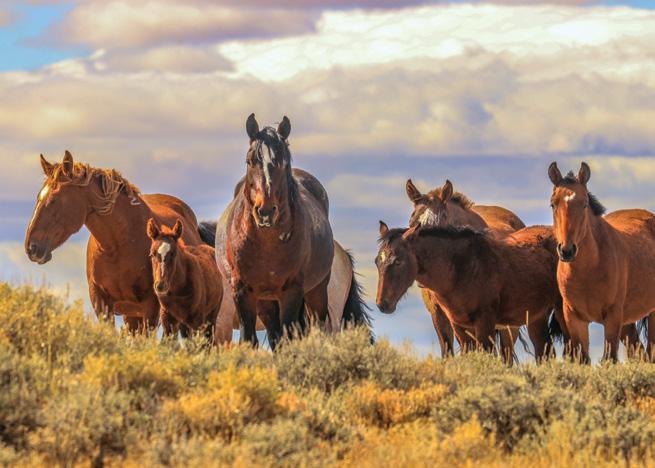
AWI is suing the Bureau of Land Management after the agency finalized a management plan to eliminate millions of acres of federally designated habitat for wild horses in Wyoming. The suit was filed in the US District Court for the District of Wyoming on May 10 by public interest law firm Eubanks & Associates on behalf of AWI and co-plaintiffs the American Wild Horse Campaign and Western Watersheds Project.
The BLM management plan comes on the heels of the largest roundup of wild horses in US history, in which the agency removed over 3,500 mustangs from Wyoming despite these horses being popular tourist draws. The BLM is eliminating established herd management areas (HMAs) in response to pressure from a livestock grazing association. It is doing so even though it acknowledges that the HMAs offer adequate forage, water, and other resources to maintain a healthy and stable population of horses.
The BLM’s unwarranted action would further decimate the state’s wild horse population and set a dangerous precedent whereby wild horses could be removed whenever they prove inconvenient to the agency or to private special interests.
BIODIVERSITY DECLINES WORSE THAN PREVIOUSLY THOUGHT
The International Union for Conservation of Nature (IUCN) Red List of Threatened Species is a valuable database containing information on species status, population trends, and threats. While it has its flaws—including some out-of-date species assessments and overall
coverage of only a fraction of known species—it provides important status indicators for more than 150,000 animal and plant species.
Based on a number of factors, the Red List places assessed species in one of several categories, including critically endangered (CR), endangered (E), vulnerable (V), near threatened (NT) and least concern (LC). In 2022, Red List data revealed that 18 percent of all vertebrate and insect species assessed are considered at the very least threatened (i.e., categorized as CR, E, or V). Broken down by taxonomic groups, the percentages are as follows: amphibians (35% of species), mammals (22%), insects (19%), reptiles (18%), fish (14%), and birds (12.5%).
While these numbers are troubling, a new analysis published in Biological Reviews—by Catherine Finn and Dr. Daniel Pincheira-Donoso of Queens University Belfast and Dr. Florencia Grattarola of Czech University of Life Sciences Prague—presents an even more alarming picture of species decline. Rather than rely on placement within Red List
categories, the authors looked at Red List population trend data (e.g., decreasing, stable, increasing).
Their analysis revealed that 48 percent of CR, E, and V species were in decline. Among 33,305 species of vertebrates and insects in these categories for which population data was available, significant declines were found in each taxonomic group: amphibians (63% of 4,991 species); mammals (56% of 3,383); birds (53% of 10,305); insects (54% of 3,006); fish (41% of 6,445); reptiles (28% of 5,175). These figures may even be an underestimate, as population trend data are not up to date for a number of species.
Even for “non-threatened” species— those categorized as NT or LC on the Red List—the authors found a 33 percent decline among the 24,185 species for which population trend data were available (81% of 2,610 NT species; 27% of 21,575 LC species), suggesting eventual reclassification into categories of greater concern if threats to these species remain unabated.
DANA TERRESTRIAL WILDLIFE 21 AWI QUARTERLY FALL 2023
by

 D.
D.





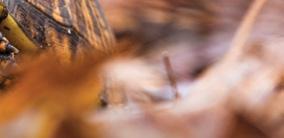
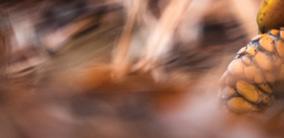
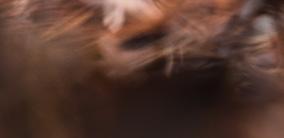
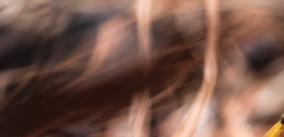
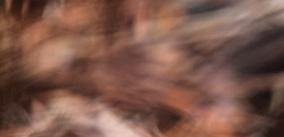

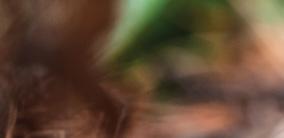
The eastern box turtle is collected in enormous numbers for the illegal wildlife trade. Only a portion of this trade is detected, and when it is, wildlife agencies must decide what to do with those animals. Their longevity (40+ years) makes such turtles both challenging to maintain in captivity and extremely valuable to the conservation of wild populations. Illegally collected turtles are often subjected to inhumane conditions prior to their confiscation; thus, supportive care prior to release may be critical to the success of any subsequent repatriation efforts.

With funding from a Christine Stevens Wildlife Award from AWI, we evaluated the suitability of repatriating confiscated box turtles back into the wild using two groups as controls—resident wild turtles and released rehabilitated turtles. In fall 2019, the University of Georgia’s Savannah River Ecology Laboratory, in collaboration with the South Carolina Department of Natural Resources (SCDNR), released more than 150 box turtles confiscated by law enforcement onto a protected site near Aiken, South Carolina, and began monitoring their post-release health, movement, and survival by radio-tracking 40 of the released turtles. As a control, we added 10 wild resident turtles to the study as they were encountered at the release site. We also obtained 35 rehabilitated box turtles that had been surrendered to the SCDNR to conform to new state laws limiting the number of native turtles that citizens can keep in captivity; 26 of this latter group were radio-tracked following their release onto the site. All three groups were monitored during the 2021 field season—the second year
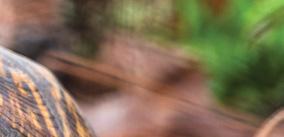
post release for confiscated turtles and the first year post release for the long-term captives.
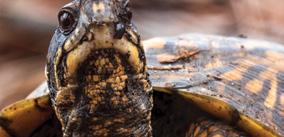
On average, confiscated box turtles took approximately 4-6 weeks following release to settle into the release site and establish a home range. Once they did so, they exhibited movement patterns that were remarkably similar to those of resident box turtles at the same site. On average, confiscated turtles and resident turtles had the same home range sizes and degree of home range reuse from one year to the next. The primary difference was in their activity patterns—confiscated turtles exhibited more variability of movement compared to resident turtles.
Radio-tracked confiscated turtles (who received limited supportive care prior to release) experienced lower survival in the first year following release (60–65%), likely due in part to their lower body condition at the time of release and the stressful conditions they experienced prior to being seized by law enforcement. In the second year, however, the survival rate of confiscated turtles was on par with that of the residents (95–100%).
Our results suggest that if disease risks can be minimized and health at time of release improved, confiscated eastern box turtles can be successfully released back into the wild and behave and perform similarly to resident turtles. Preliminary results from long-term captives lend further support to the important role of release condition on post-release fate, as long-term captives experienced ~90 percent survival during their first year after release. Thus, rehabilitation prior to translocation, thereby enhancing the turtles’ health upon release, may result in greater success for turtles confiscated from the illegal wildlife trade.

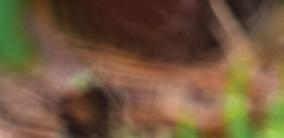 Dr. Tracey
Tuberville, Ryan J. Rimple, and Emma A. Browning, Savannah River Ecology Laboratory, University of Georgia
Dr. Tracey
Tuberville, Ryan J. Rimple, and Emma A. Browning, Savannah River Ecology Laboratory, University of Georgia
PEKKA PELTOLA 22 AWI QUARTERLY FALL 2023
EVALUATING THE SUITABILITY OF CONFISCATED AND REHABILITATED EASTERN BOX TURTLES FOR RELEASE BACK INTO THE WILD
AvianOccupyAdvocates Top Perches in Voice for Animals Contest

Since 2010, AWI has partnered with the Humane Education Network for the student contest “A Voice for Animals.” Each year, our judges take on the challenging task of choosing the winning submissions from a pool of creative and fascinating entries. For this year’s competition, contestants were invited to write about animals in their area and solutions to local issues such as invasive or endangered species, or humanwildlife conflicts. The entries—received from around the globe—did not disappoint. Many of the students recognized how local advocacy and collaboration can foster a sense of pride and appreciation for one’s community. While a wide variety of species were represented in video, photos, and writing, several top prizes this year went to the birds.
First prize in the “video” category went to Houstonian Adoriam DeWalt, who parlayed her Girl Scout project into a campaign to help migratory birds traveling through Texas on their way to and from Mexico. By educating residents in her hometown about simple, accessible solutions that allow for increased avian-friendly habitat, she demonstrated that small measures can have a big impact collectively. Though her video centered on the importance of helping our feathered friends, Adoriam is also involved in other conservation efforts in her state.
Shannon Hong of Albertson, New York, earned first prize in the “essay” category for her piece on the monk parakeet. The monk parakeet is a colorful, charming bird native to Argentina. In the 1960s, the species was introduced via the pet trade into the United States. Escaped or abandoned




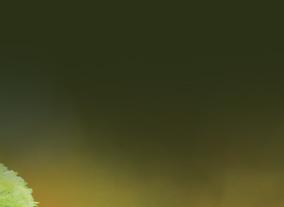

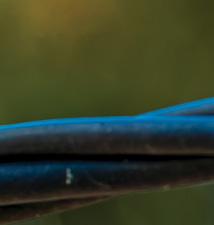
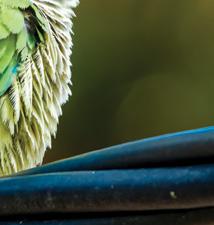
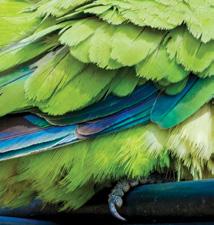
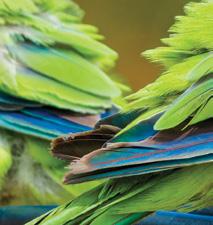
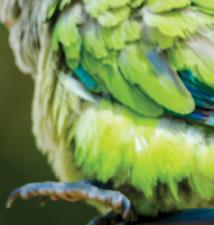

birds adapted to the climate and are now considered an invasive species. For several years, Shannon has admired these birds and their well-engineered nests, which often cause problems for power companies. In her essay, she discusses her efforts to inform her community that the birds, though non-native, are not overrunning the ecosystem and need not be maligned as “pests.” She touts a bill in the New York State Legislature that could protect these birds from inhumane methods of elimination.
An essay by Joel Lee of Jakarta, Indonesia, about the illegal wild bird trade in his country earned second prize. Capturing and selling songbirds results in the suffering of individual birds and declines in the populations of species that play an essential role in the ecosystem. Joel considers the cultural aspects that bolster Indonesia’s bird markets, and suggests that activities such as eco-tourism can bridge the gap between the excitement of seeing these exotic birds first-hand and the need to promote sustainable populations in the wild.

Other notable prizes were awarded to essays that covered the effects of human-caused ocean noise on aquatic life, involvement in animal rescue organizations, and how public housing policy reforms can help secure the well-being of humans and their companion animals. AWI congratulates the winners of the 2023 “A Voice for Animals” contest and thanks all of the entrants for their time and hard work examining these critical challenges. To see the complete list of winners and view their entries, please visit hennet.org.

NICK TAURUS 23 AWI QUARTERLY FALL 2023
New Regs to Rein In Racehorse Abuse; USDA Proposes Potential HPA Upgrade

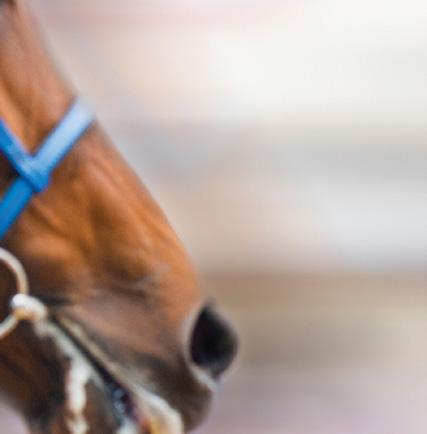
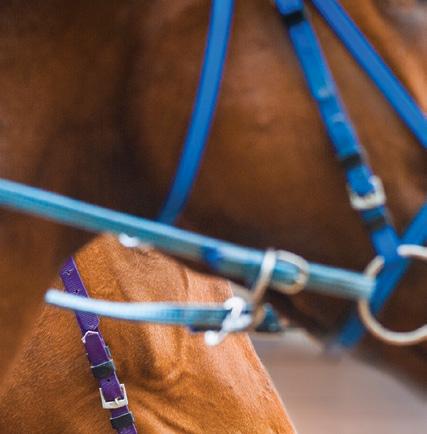
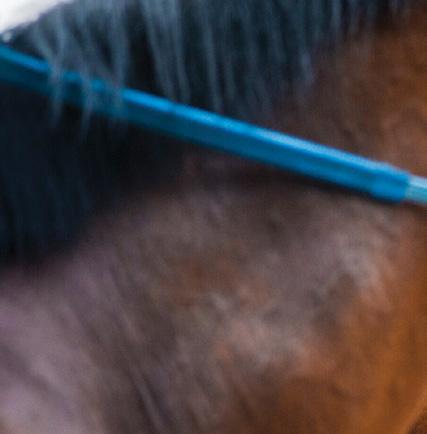
Whether they are thoroughbreds running full tilt around an outdoor track or walking horses stepping gracefully across an arena, horses bred for competition undergo extensive training and conditioning. For owners and trainers, a champion horse can mean big money and a place in the record books.
As with any competitive enterprise, however, high stakes can push a will to win over the line into a will to win at any cost. Too often, single-minded pursuit of victory ends up running roughshod over the safety and well-being of the horses themselves. Thoroughbreds are given drugs to enhance performance and mask pain. Conversely, walking horses are “sored”—intentionally put in pain to “enhance” their highstepping gait.
AWI is working to curb rampant abuse in both fields.

● THOROUGHBRED RACING
This year’s Triple Crown season was marred by a troubling and steady stream of equine deaths, including 12 horses who died at Louisville’s Churchill Downs in the span of six weeks (two of whom died during races on Kentucky Derby Day). This intensified a growing media focus on the dangers and welfare problems increasingly associated with US horseracing. Between 2009 and 2021, according to The
Jockey Club’s Equine Injury Database, 7,274 thoroughbreds died in training- or race-related incidents.
Following enactment of the Horseracing Integrity and Safety Act in 2020, the Horseracing Integrity and Safety Authority (HISA) was created to establish and enforce consistent standards for racetrack safety protocols and the use of medications—the latter aimed at cracking down on rampant “doping” (administration of drugs that mask pain and allow horses to push beyond normal physical limitations, which can lead to catastrophic injuries).
Regarding the latest string of deaths at Churchill Downs, AWI worked closely with a bipartisan group of lawmakers to urge HISA, the Kentucky Horse Racing Commission, and Churchill Downs Incorporated (CDI) to undertake thorough, transparent investigations. HISA convened an emergency summit in late May. A few days later, it formally recommended a suspension of racing at Churchill Downs. This was done, and the remainder of the track’s spring meet was moved to Ellis Park—a small CDI-owned venue 2 ½ hours away.
AWI has long pushed for the robust implementation of “antidoping and medication control” regulations and racetrack safety rules. We submitted multiple regulatory comments to the Federal Trade Commission, which ultimately approved
OLGA ITINA 24 AWI QUARTERLY FALL 2023
HISA’s proposed regulations (citing AWI’s comments in the order approving the anti-doping and medication control rule).
For racehorses, drug controls and added safety measures cannot come too soon. Implementation of the new regulations, however, was severely delayed by litigation from certain industry groups and state racing commissions that have opposed national oversight in the industry. They finally went into effect on May 22, two days after the Preakness Stakes in Baltimore—won by a Bob Baffert–trained horse. Baffert has been banned from the past two Kentucky Derbies after his apparent 2021 Derby winner, Medina Spirit, tested positive for a banned substance and was disqualified. Later that year, the 3-year-old colt died (possibly from a heart attack) following a workout.
● WALKING HORSE COMPETITIONS
When the Horse Protection Act (HPA) was signed into law in 1970, it was intended to shield Tennessee walking horses (known for their gentle disposition and prized for their distinctive and smooth stride) and related breeds from the barbaric practices associated with “soring”—inflicting pain to elicit a more pronounced high-stepping gait for competition.
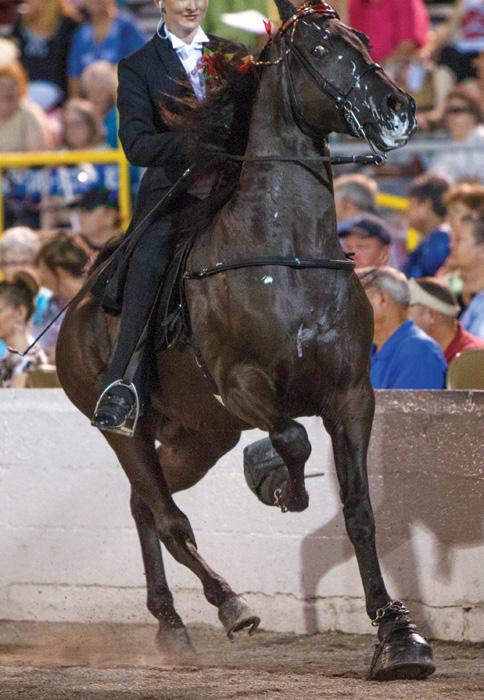
Soring methods include applying diesel fuel and kerosene to burn the skin of horses’ legs, grinding down hooves to expose sensitive tissues, and applying sharp or abrasive objects to tender areas. Such practices persist largely because the US Department of Agriculture outsources much of its responsibility for HPA enforcement to the very groups that put on shows and competitions—a self-policing scheme that has proven woefully ineffective.
For the small number of events to which the USDA does send its own inspectors, the difference is stark. In a USDA review of 2021 data, for example, industry inspectors recorded a 99 percent compliance rate, while USDA inspectors noted a 69 percent compliance rate—in other words, while USDA inspectors found violations in more than 3 out of 10 cases, industry inspectors uncovered next to none.
AWI has persistently advocated necessary upgrades to the HPA to protect walking horses against such heinous abuse. We have rallied support in Congress for the Prevent All Soring Tactics (PAST) Act (HR 3090), a bill that would end the failed industry self-policing scheme, ban the use of devices closely associated with soring, and increase penalties for violators. The PAST Act was reintroduced in the House of Representatives in May and has already amassed nearly half of the chamber’s members as cosponsors. Unfortunately, despite
strong support in the Senate, as well, the bill has never been brought to the floor for a vote in the upper chamber.
The USDA has also promised to strengthen HPA regulations. In early January 2017, the department—under Secretary of Agriculture Tom Vilsack—attempted to issue regulations that would have bolstered HPA enforcement and accomplished many of the same goals as the PAST Act. But the Trump administration took over later that month and froze the effort.
Secretary Vilsack returned under the Biden administration, and the USDA indicated a “new and improved” HPA rulemaking proposal was “a top regulatory priority” in December 2021. But a year and a half later, in June 2023, it withdrew the proposed 2017 rule (which it could have just reissued) without indicating a replacement was forthcoming.
AWI had convened a stakeholder meeting with USDA officials earlier that month in which animal protection, equine industry, and veterinary groups urged the department to expedite the process. AWI also ran a series of advertisements in a national media outlet to call attention to the USDA’s perplexing inaction. Ads on the website were viewed more than half a million times and ads in print and digital newsletters were delivered to nearly a million and a half recipients. Meanwhile, AWI supporters sent around 9,000 messages to Secretary Vilsack urging swift action. Finally, just as this AWI Quarterly issue was going to print, the USDA released a new HPA rulemaking proposal—which AWI will review and report on in a subsequent issue.
25 AWI QUARTERLY FALL 2023
HSUS
FLIGHT PATHS
Rebecca Heisman / HarperCollins / 267 pages
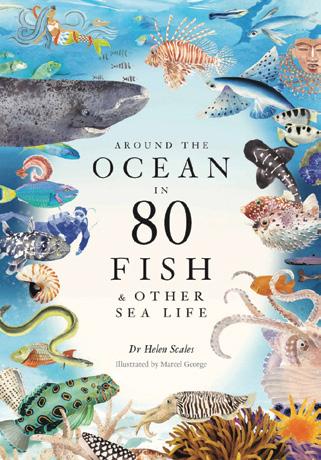



When Rebecca Heisman worked for the American Ornithological Society, her job involved reading “cutting-edge migration research” and publicizing it in a digestible way for the public. She sought to provide readers with the answer to a seemingly simple question: Where do the birds go? That work formed the beginnings of Flight Paths: How a Passionate and Quirky Group of Pioneering Scientists Solved the Mystery of Bird Migration—an educational, enlightening, and whimsical story of avian migration discovery.
Theories about bird migration have been advanced for centuries. Stories by early naturalists told of swallows hibernating in the crevices of trees or deep in the mud at the bottom of lakes and rivers, birds transmogrifying throughout the seasons, or even birds mystically flying to the moon. Flight Paths moves beyond these antiquated and sometimes outlandish theories to call attention to the scientists, researchers, scholars, bird enthusiasts, and hobbyists who pioneered the modern study of bird migration.
Heisman’s writing style makes it easy to follow along as she explains complex science and walks readers through discoveries chronologically—from the early stages of banding and tagging to the modern GPS and biological testing done today. Unlikely folks are featured—contributors large and small, from various backgrounds, who added to the advancements. Heisman is a captivating storyteller, bringing joy and excitement to all stages of her interviews and investigations, encouraging readers to feel the excitement, too.
While describing the advancements made over the years, Heisman also emphasizes the importance of it. Tracking the movement of birds contributes to the conservation of species and ecosystems, deepens our understanding of the arduous and extraordinary journeys birds make, and encourages people around the globe to take up birdwatching.
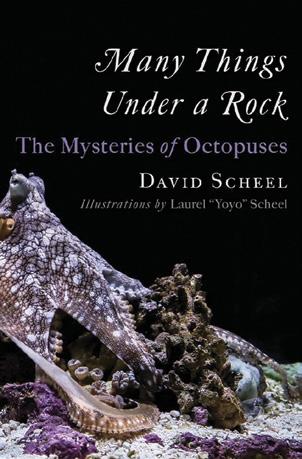
Tailored to anyone from the casual birdwatcher to dedicated ornithologist, Flight Paths provides insight into the people who laid the groundwork for bird migration discovery and modern understanding. Who knows? After reading this book, maybe you too will begin listening for the night calls of migratory birds during the changing seasons.
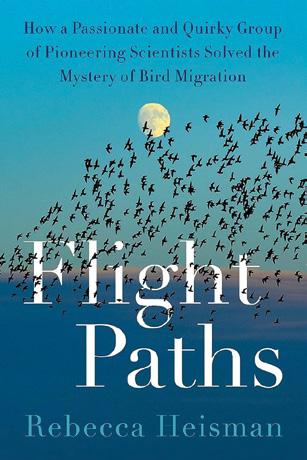
REVIEWS
26 AWI QUARTERLY FALL 2023
MANY THINGS UNDER A ROCK
David Scheel / W.W. Norton & Company, Inc. / 307 pages
“Devilfish,” “old skin covering,” “many things under a rock”— octopus names are as varied and creative as the creatures themselves. As Many Things Under a Rock: The Mysteries of Octopuses reveals, these inquisitive, intelligent animals are capable of throwing things at each other, re-growing severed limbs, rapidly changing color to blend in with their surroundings, standing guard (in the case of some large males) over their communities, and displaying empathy— toward each other, and perhaps even humans.
As predators, octopuses consume dozens of varied species, using a combination of hardened beaks to smash, toothed tongue-like organs to drill, suckers to pry open, and paralyzing saliva to immobilize. As prey, they evade hunters (like sea otters and moray eels) by hiding in dens, moving quietly through dense cover, shifting the times when they are active to when their predators are not, and altering the color and texture of their skin—and even the shapes of their bodies—to obscure their outlines and mimic nearby objects. These abilities are all the more impressive for an animal that receives no parental care or guidance after hatching from an egg (mother octopuses take meticulous care of their eggs, but die shortly after the eggs hatch), leads a generally solitary existence, and must perfect an impressive array of skills within a typical lifespan of a few years or less.
In page-turning detail, Dr. David Scheel, a behavioral ecologist and professor of marine biology at Alaska Pacific University, shares his observations of octopuses over a 25year career of studying them around the world, particularly in the coastal waters near his home in Anchorage, Alaska. Woven throughout are Indigenous stories and legends of octopuses as sea monsters, warrior combatants, and even members of human families.
Importantly, Scheel explains why octopuses—highly curious and mostly asocial species (which may even attack and kill each other when confined in cramped, stressful quarters)— are profoundly ill-suited to be commercially farmed for human food. Instead, in light of warming sea temperatures
and other threats, the focus must remain on preserving wild octopus populations and their habitats.
In the end, readers will agree that these remarkable creatures are far more than the horn-like protrusions above their eyes, the skin that accounts for so much of their bodies, or the eight limbs (each with semi-autonomous nervous systems) dangling in a den under a rock. They are one of the most complex and captivating beings in the sea.
AROUND THE OCEAN IN 80 FISH & OTHER SEA LIFE
Dr. Helen Scales (author), Marcel George (illustrator) / Laurence King Publishing / 200 pages
Around the Ocean in 80 Fish & Other Sea Life is a beautifully illustrated journey that introduces readers to various inhabitants of the five oceans. Each turn of the page reveals a new animal—with short, informative text on each species framed by original, visually stunning watercolors by contemporary artist Marcel George. Creatures featured in the book range from small cone snails and money cowries to large sperm whales and tiger sharks; from well-known sponges and Atlantic bluefin tuna to lesser-known noble pen shells, ninja lanternsharks, and eyelash harptail blennies.
As described on the dust jacket, the book is a “gorgeous celebration of our watery world.” Dr. Helen Scales—author, marine biologist, Cambridge University professor, and lifelong scuba diver—highlights unique features and provides interesting anecdotes related to each animal. However, this book is also a historical account of how humans have used—and continue to use—the bodies of each featured animal for food, art, physical adornment, currency, or even contraception. Scales describes these uses with sensitivity and appropriate concern for the welfare of the animals.
Around the Ocean in 80 Fish & Other Sea Life is a fantastic book for anyone interested in animals; it is sure to pique the interest of any budding marine biologist, nature enthusiast, or coffee-table book aficionado.
BEQUESTS
If you would like to help assure AWI’s future through a provision in your will, this general form of bequest is suggested: I give, devise and bequeath to the Animal Welfare Institute, located in Washington, DC, the sum of $ and/or (specifically described property)
Donations to AWI, a not-for-profit corporation exempt under Internal Revenue Code Section 501(c)(3), are tax-deductible. We welcome any inquiries you may have. In cases in which you have specific wishes about the disposition of your bequest, we suggest you discuss such provisions with your attorney.
REVIEWS
27 AWI QUARTERLY FALL 2023
TROUBLED WHALE HEARING STUDY AMPLIFIES ALARM OVER OCEAN NOISE IMPACTS

Since 2021, AWI and colleagues have called on the governments of Norway and the United States to withdraw permits and funding for a controversial research study that involves the capture of minke whales in Norwegian waters to test their hearing. The project involves herding juvenile minke whales into a netted-off passageway leading to an aquatic pen, trapping them inside. “Auditory evoked potential” testing involves the placement of electrodes on the whales for up to six hours; these electrodes measure their brain waves when they are exposed to various sounds. This method does not require the whale to visibly react; the brain waves indicate what sounds they can hear.
The multi-year project, funded by the US government, Norway’s Defense Research Establishment (FFI), and the energy industry, has been fraught with problems since it began in spring 2021. Last year, the researchers had to release a juvenile minke they had captured after the whale became extremely stressed and vomited. Then, in June 2023, FFI researcher Dr. Petter Kvadsheim reported that the test site had been
damaged by powerful winds and strong tidal currents. One of the 2,200-pound anchors securing the net had been dragged some 260 feet out of alignment into deeper water. When researchers inspected the damage using an ROV, they discovered that a minke whale had become entangled in the net and drowned.
Despite this, the study was allowed to continue following a short suspension. Two juvenile minkes were finally tested, satellitetagged, and released. Both were assessed to see if they registered certain sounds, and one was tested further on hearing frequency range. According to Kvadsheim, the whale could detect far higher frequencies than previously assumed for baleen whales.
AWI continues to be concerned about the design of this study and the tremendous stress inflicted on individual whales. Perhaps of broader concern, however: The preliminary data obtained at the expense of these unfortunate test subjects suggests an even greater sensitivity among whales to the noises we generate—and thus a more urgent need to be quieter guests in the ocean.

Non-Profit Org. US Postage PAID Washington, DC Permit No. 2300 IVAN KURMYSHOV
@AWIonline facebook.com/animalwelfareinstitute @AWIonline Return Service Requested






































































 by Andrew L. Von Duyke, North Slope Borough Department of Wildlife Management; Jennifer Adams and Lisette Waits, University of Idaho; Justin Crawford and Lori Quakenbush, Alaska Department of Fish and Game
by Andrew L. Von Duyke, North Slope Borough Department of Wildlife Management; Jennifer Adams and Lisette Waits, University of Idaho; Justin Crawford and Lori Quakenbush, Alaska Department of Fish and Game









 D.
D.
















 Dr. Tracey
Tuberville, Ryan J. Rimple, and Emma A. Browning, Savannah River Ecology Laboratory, University of Georgia
Dr. Tracey
Tuberville, Ryan J. Rimple, and Emma A. Browning, Savannah River Ecology Laboratory, University of Georgia




























